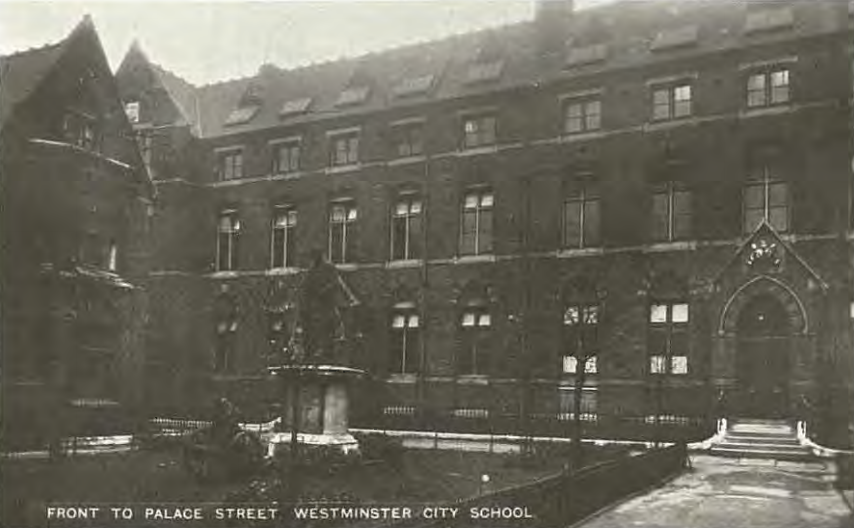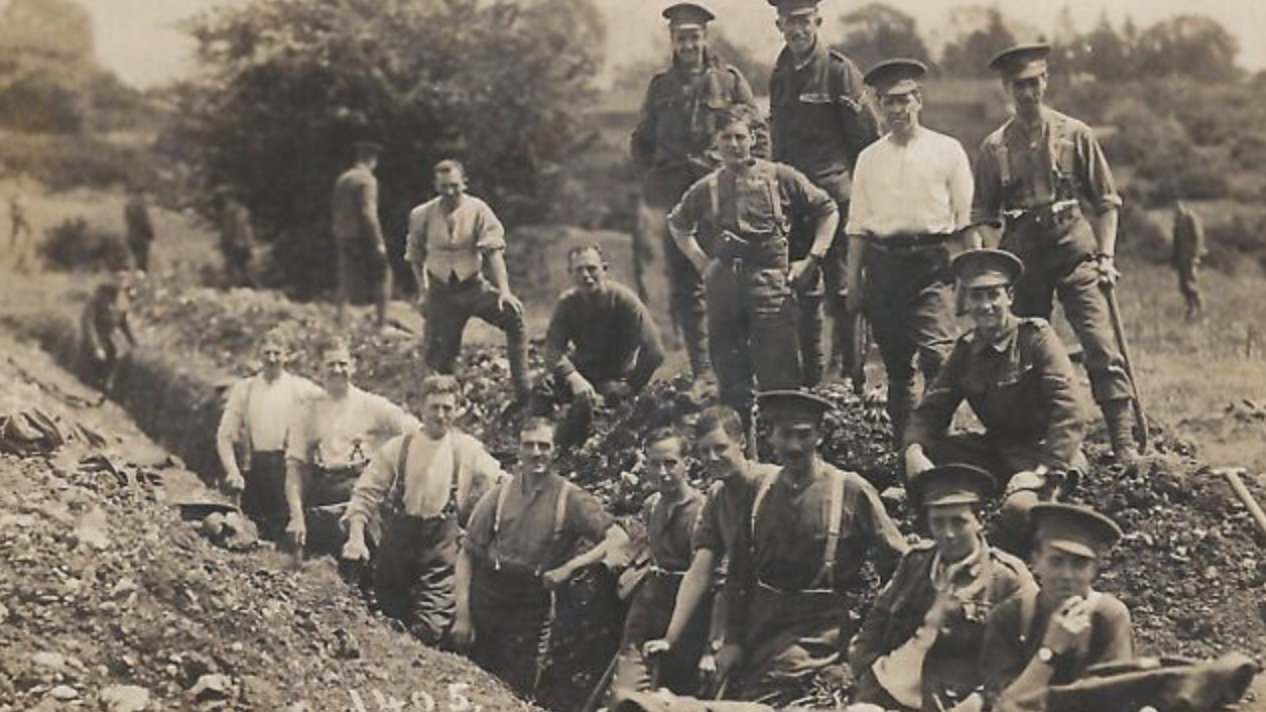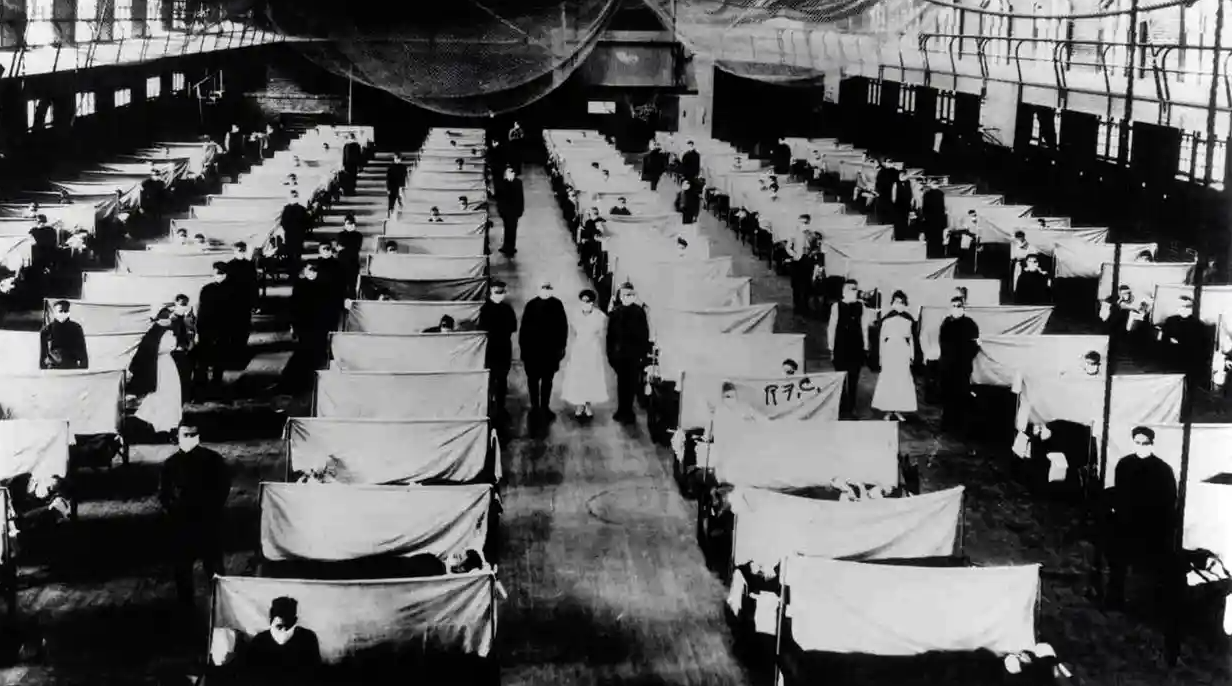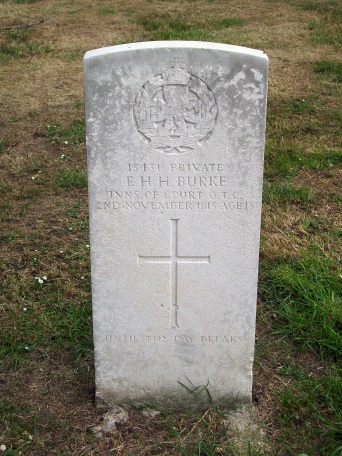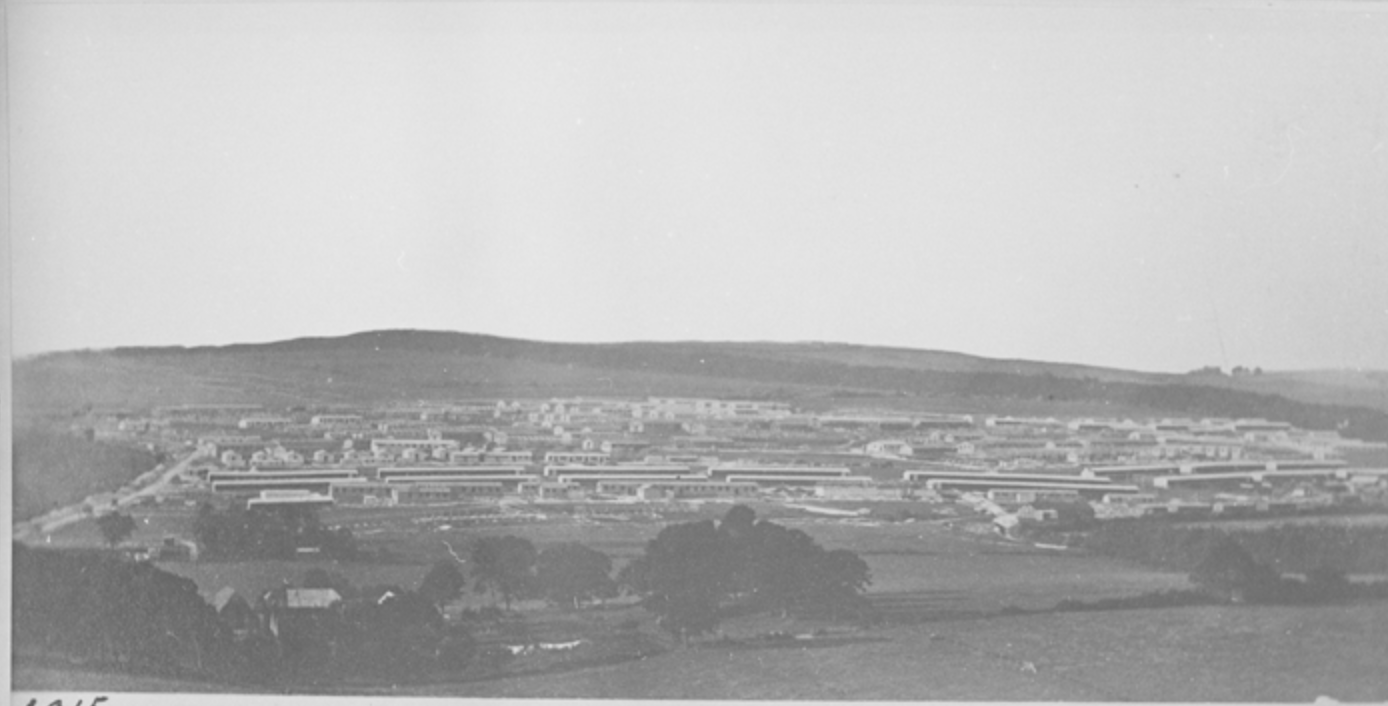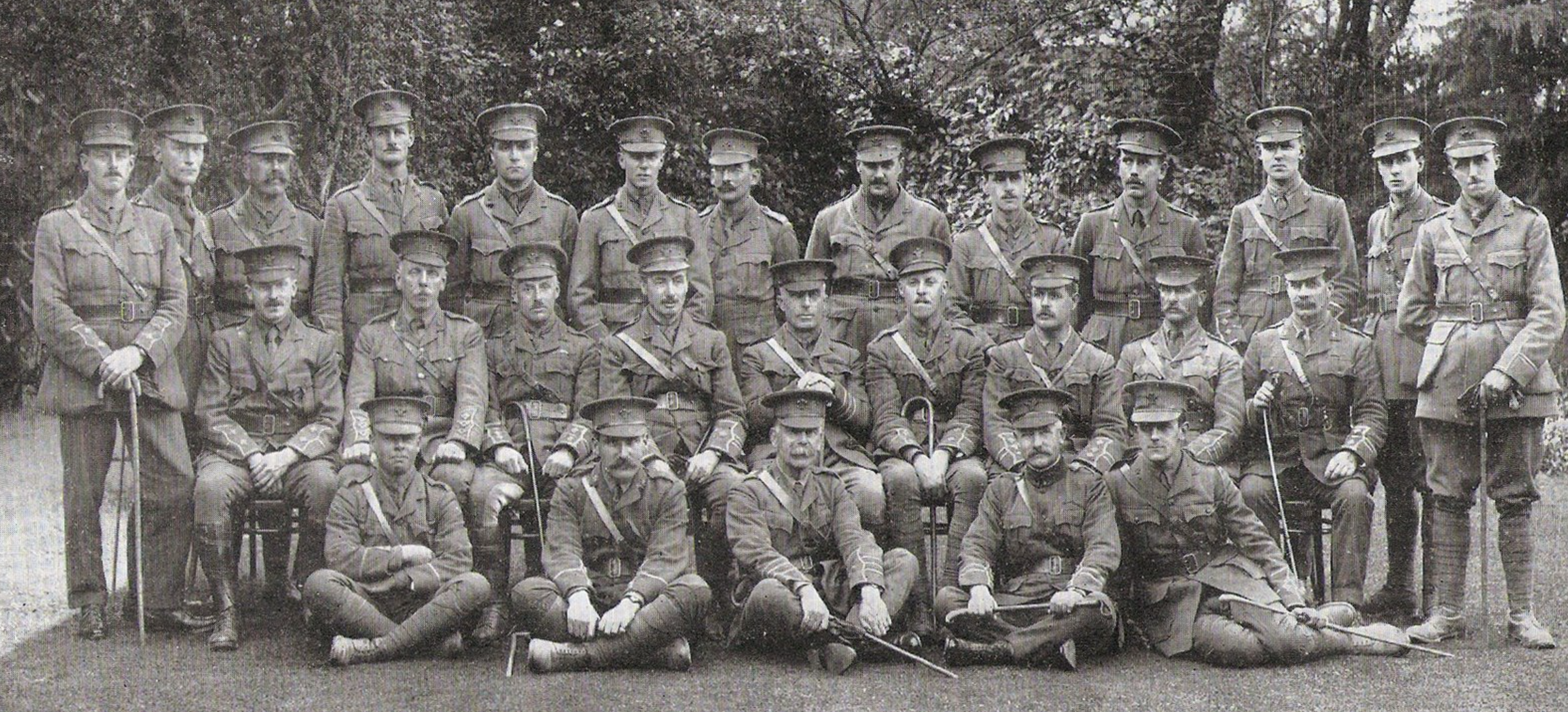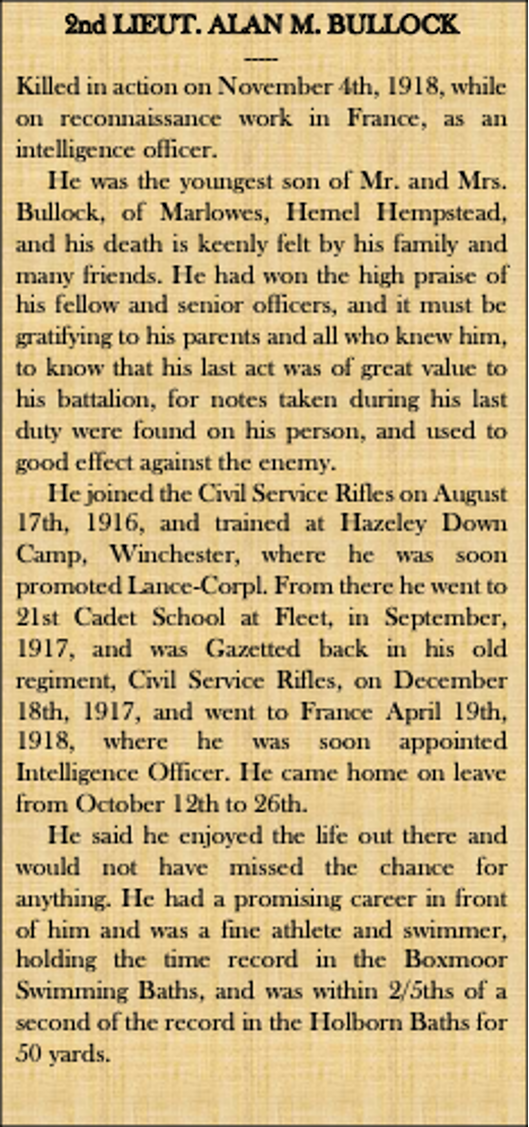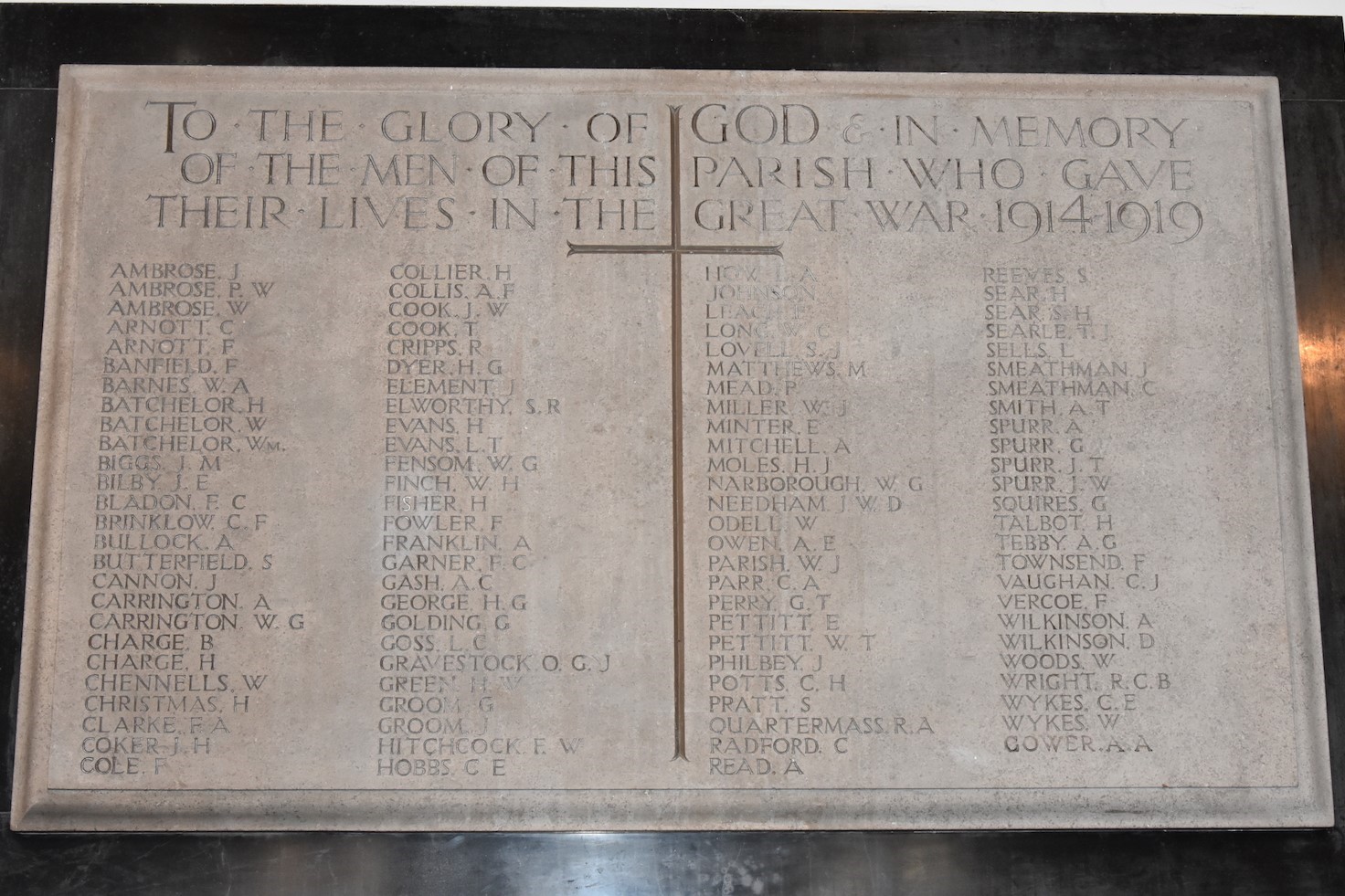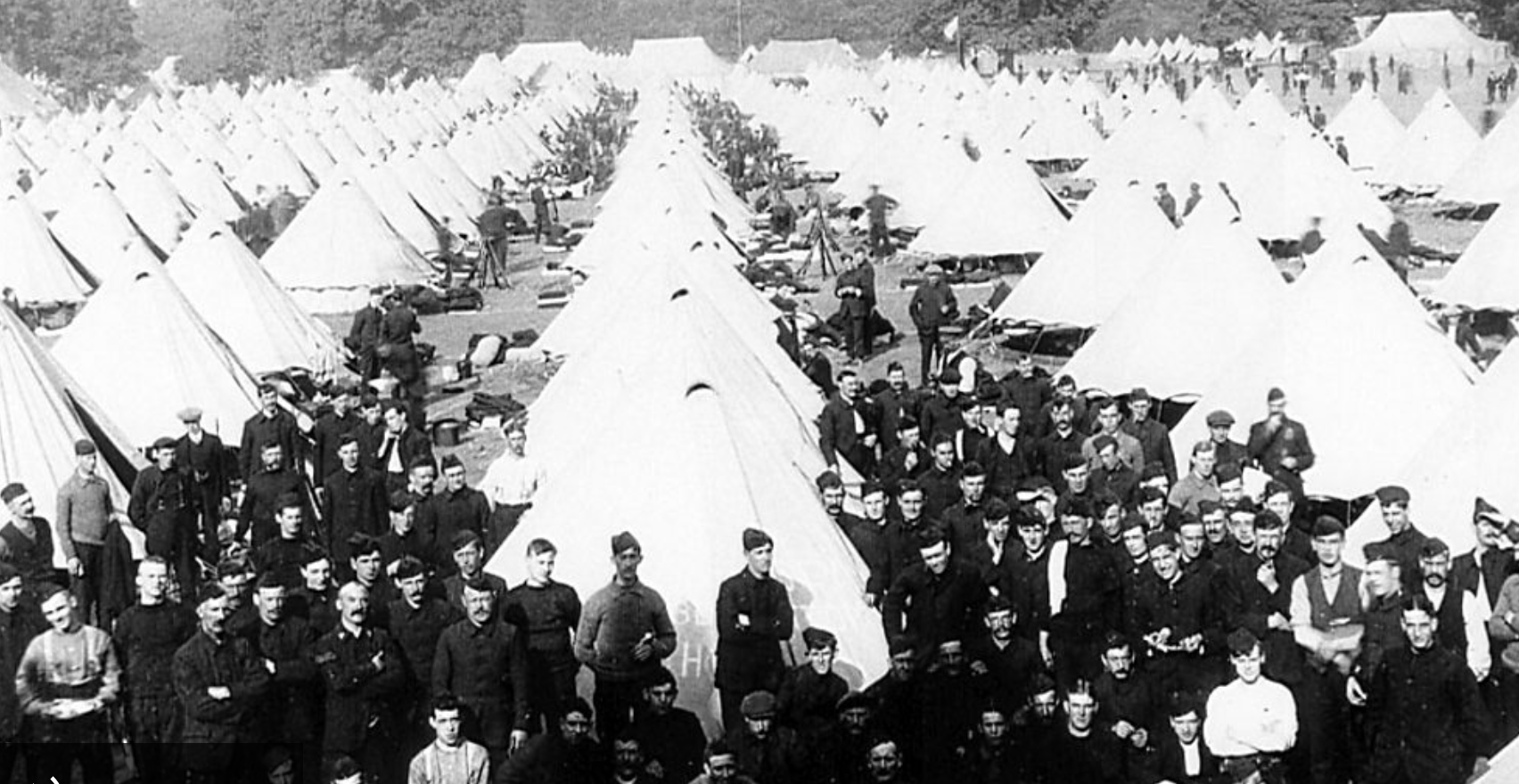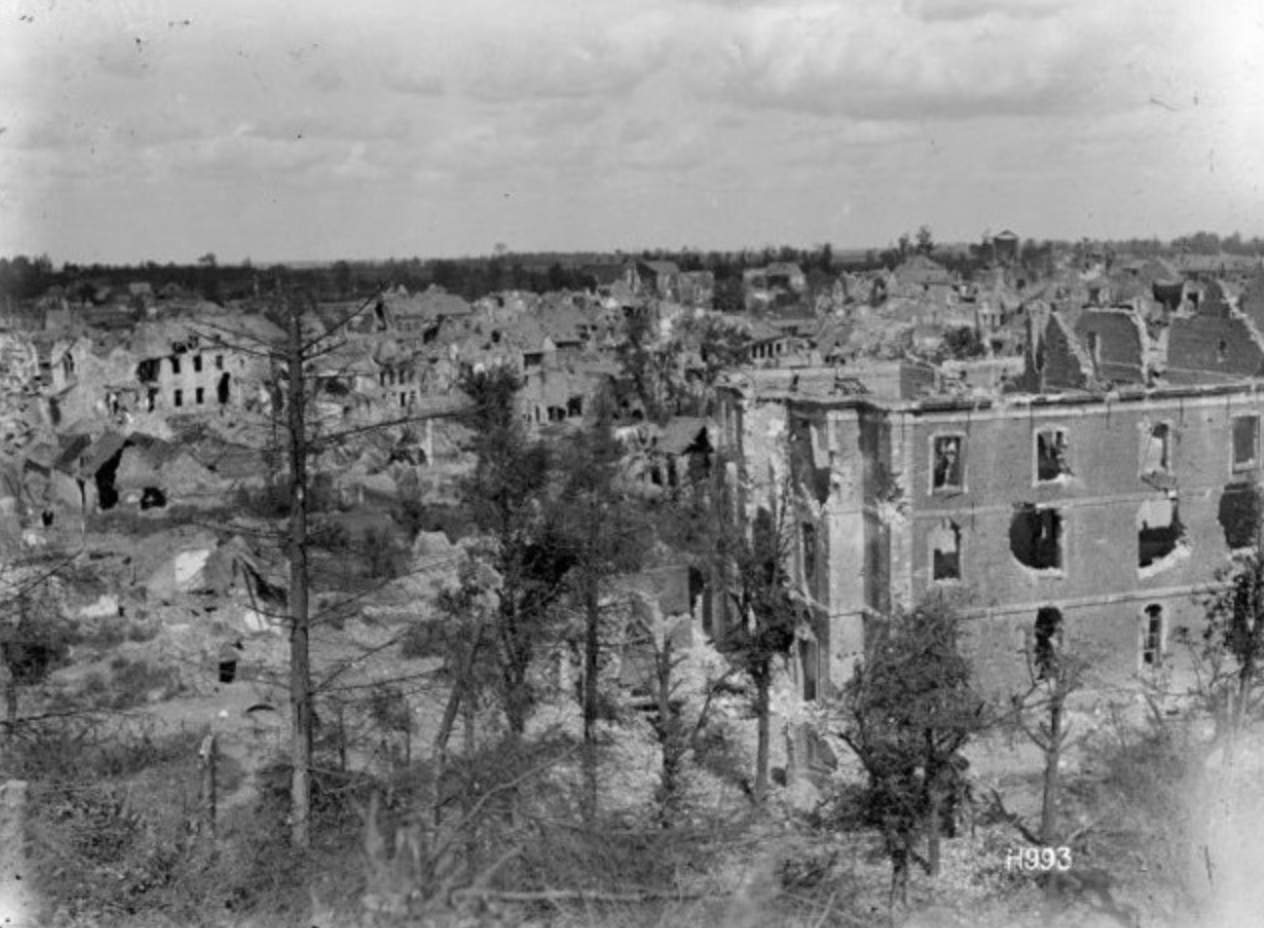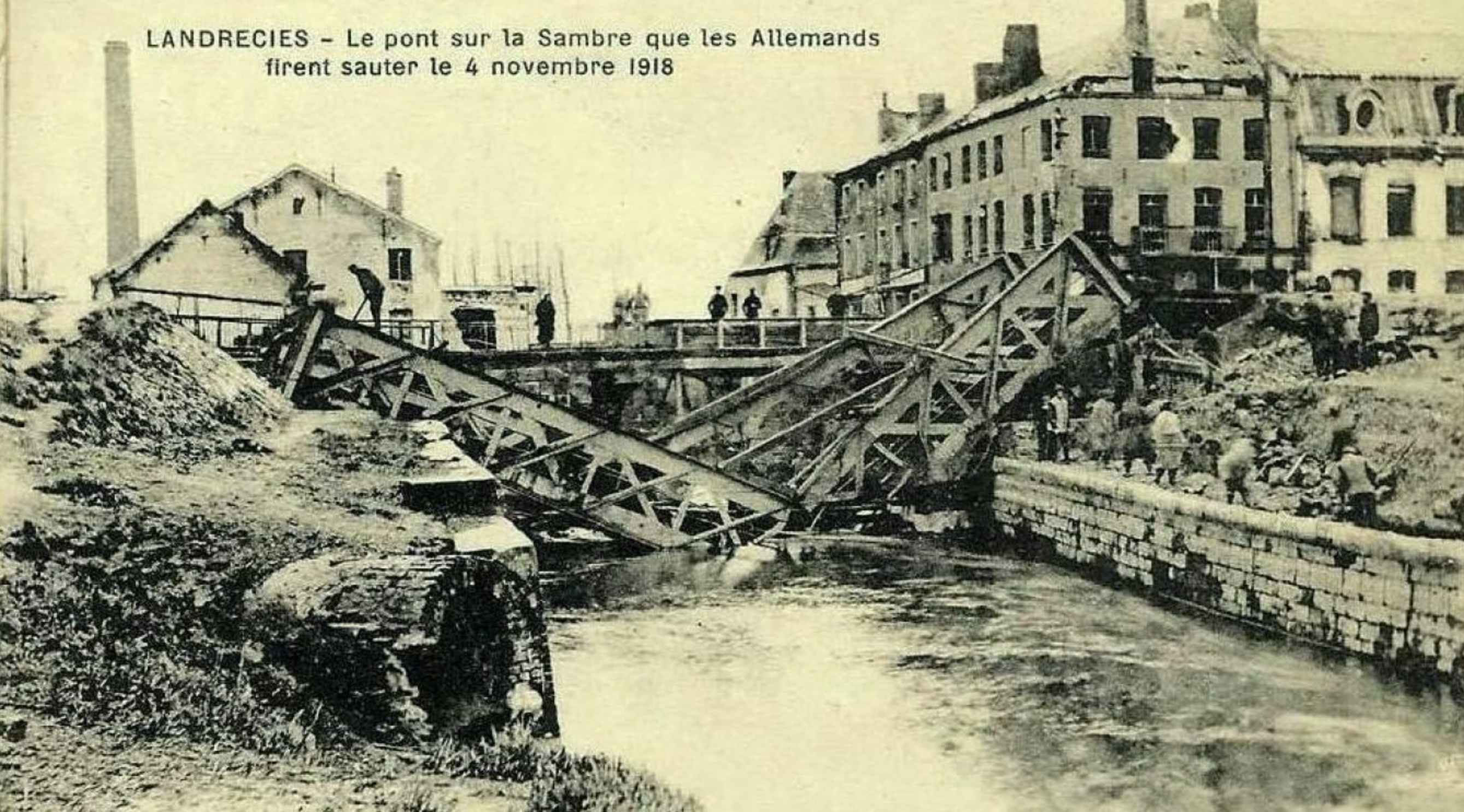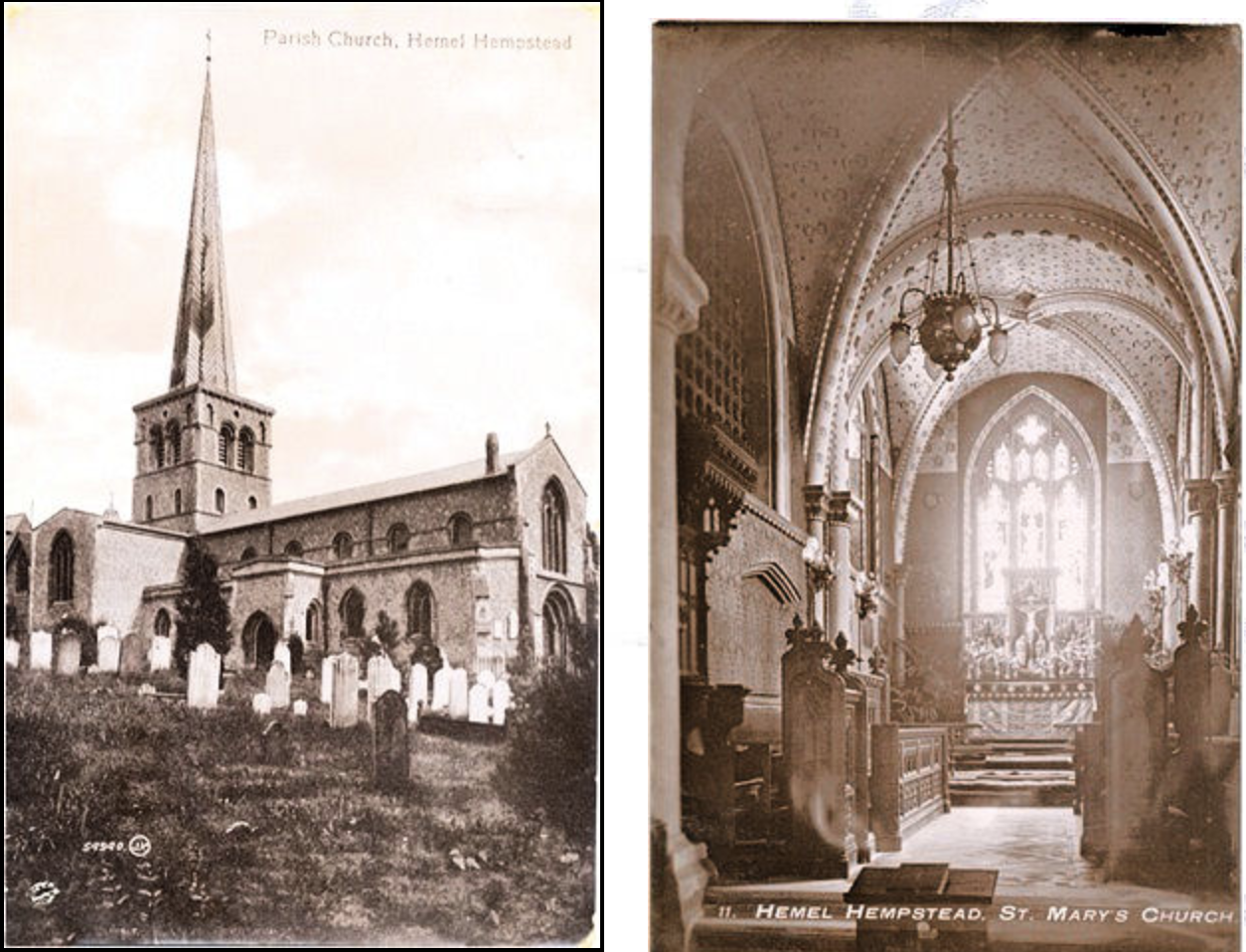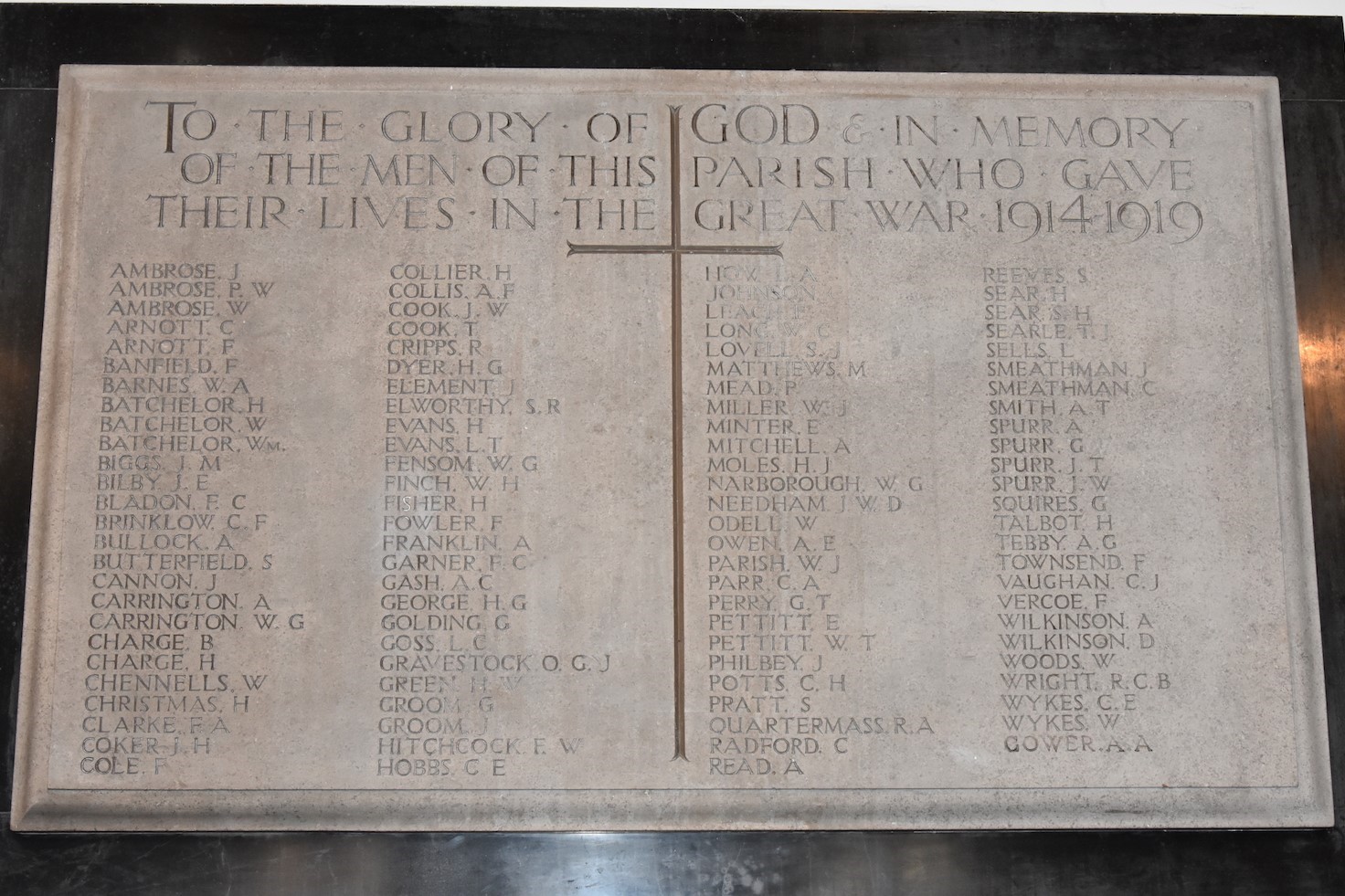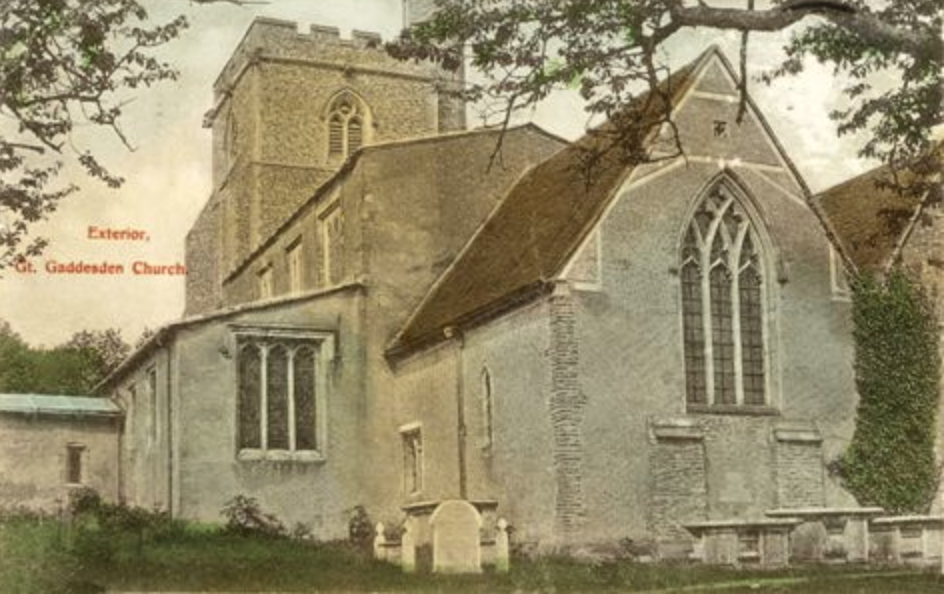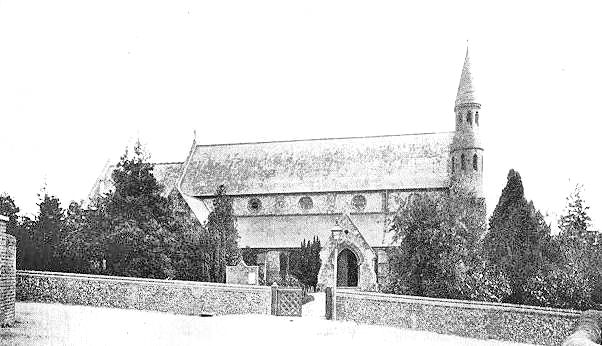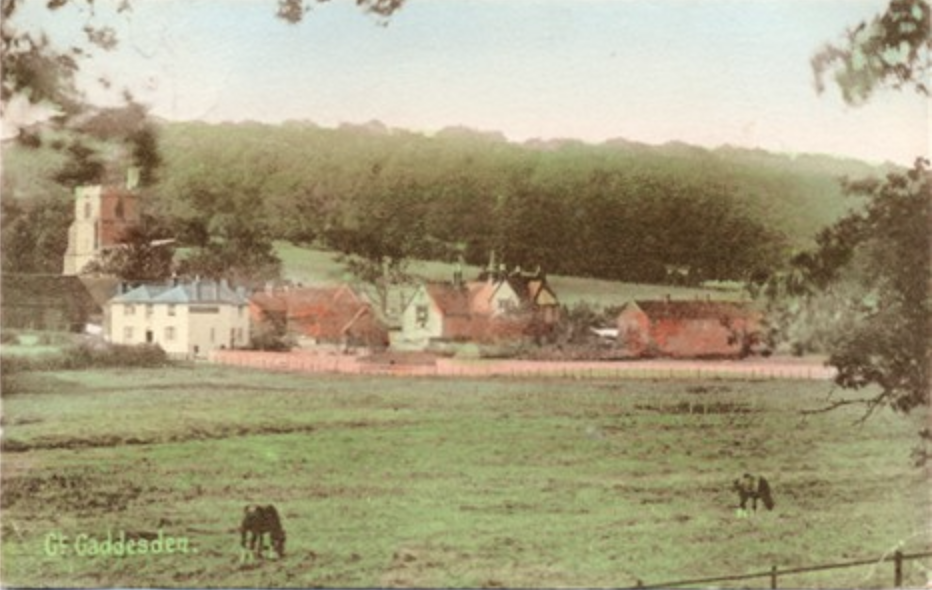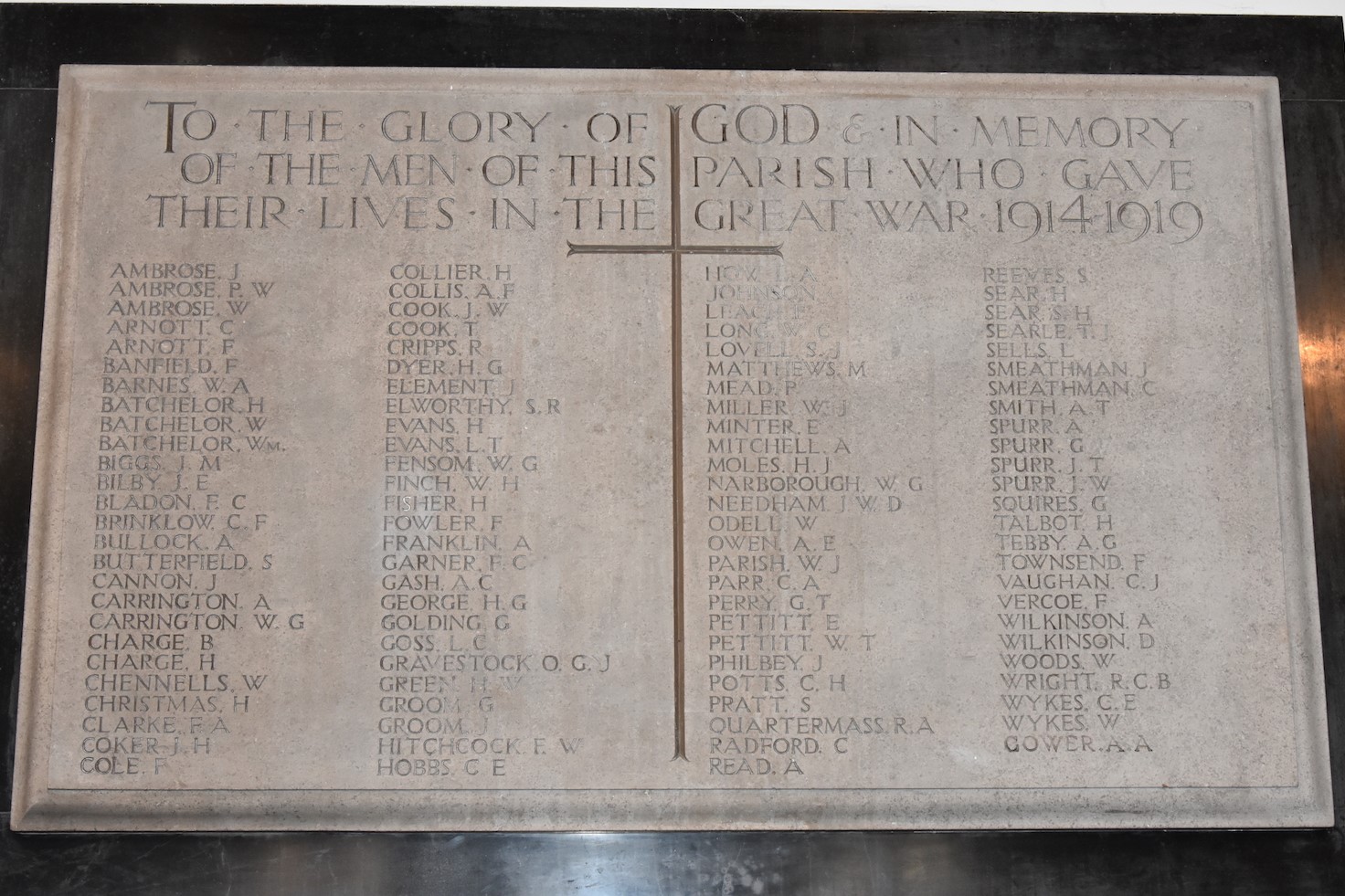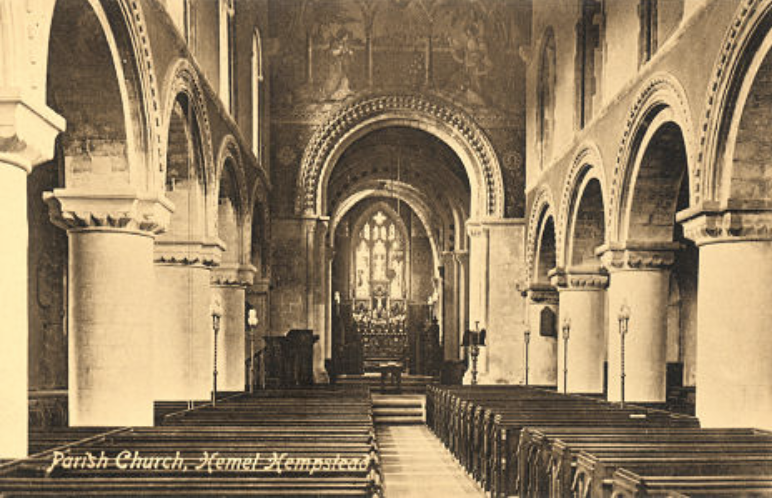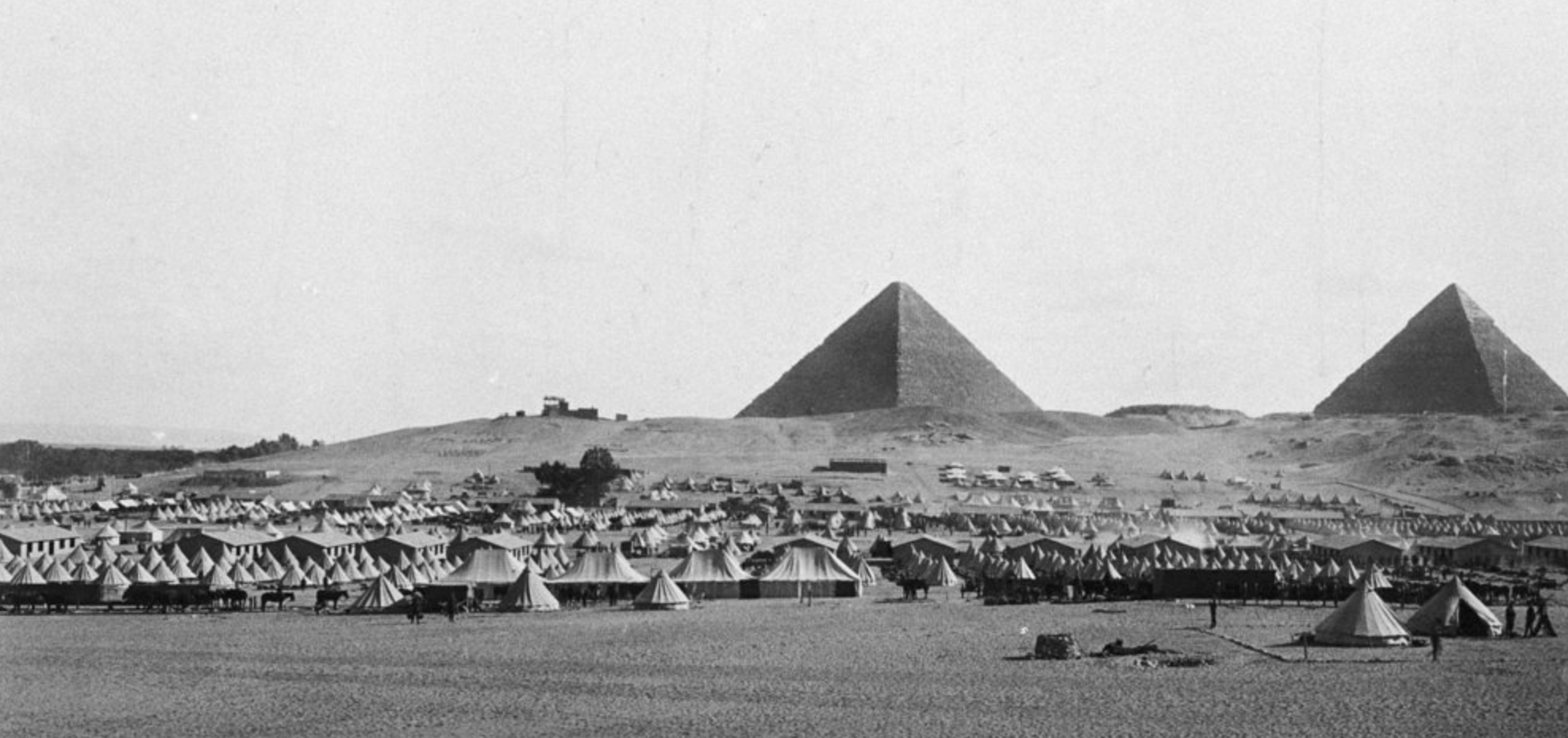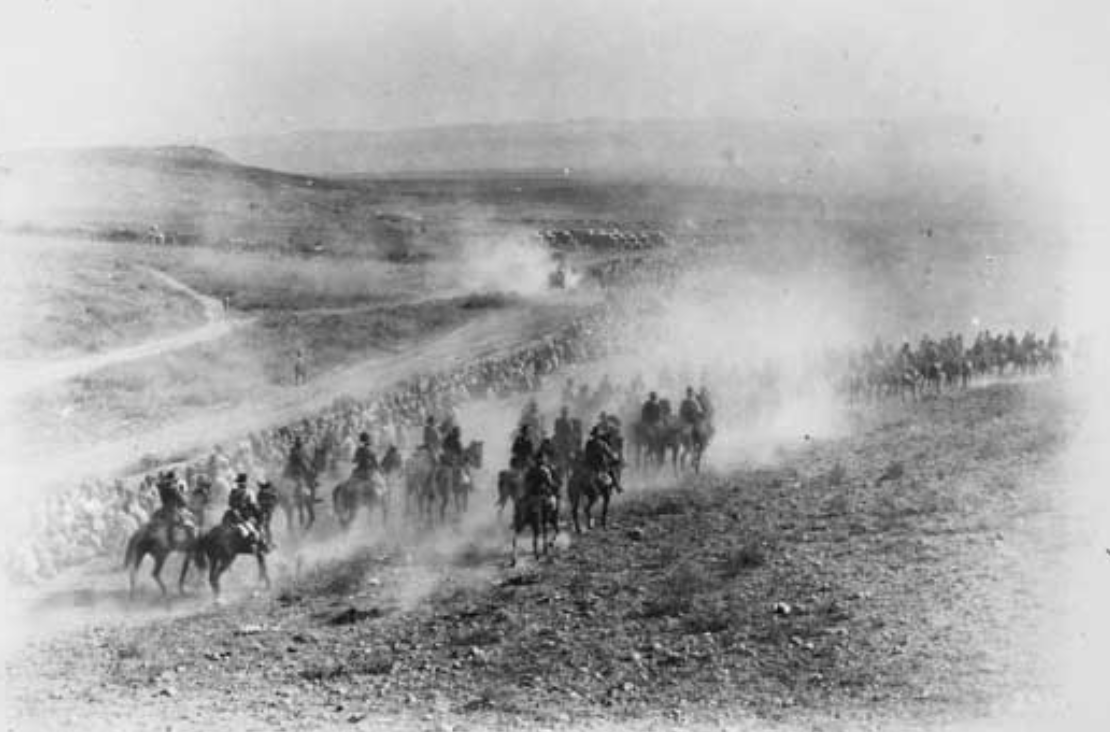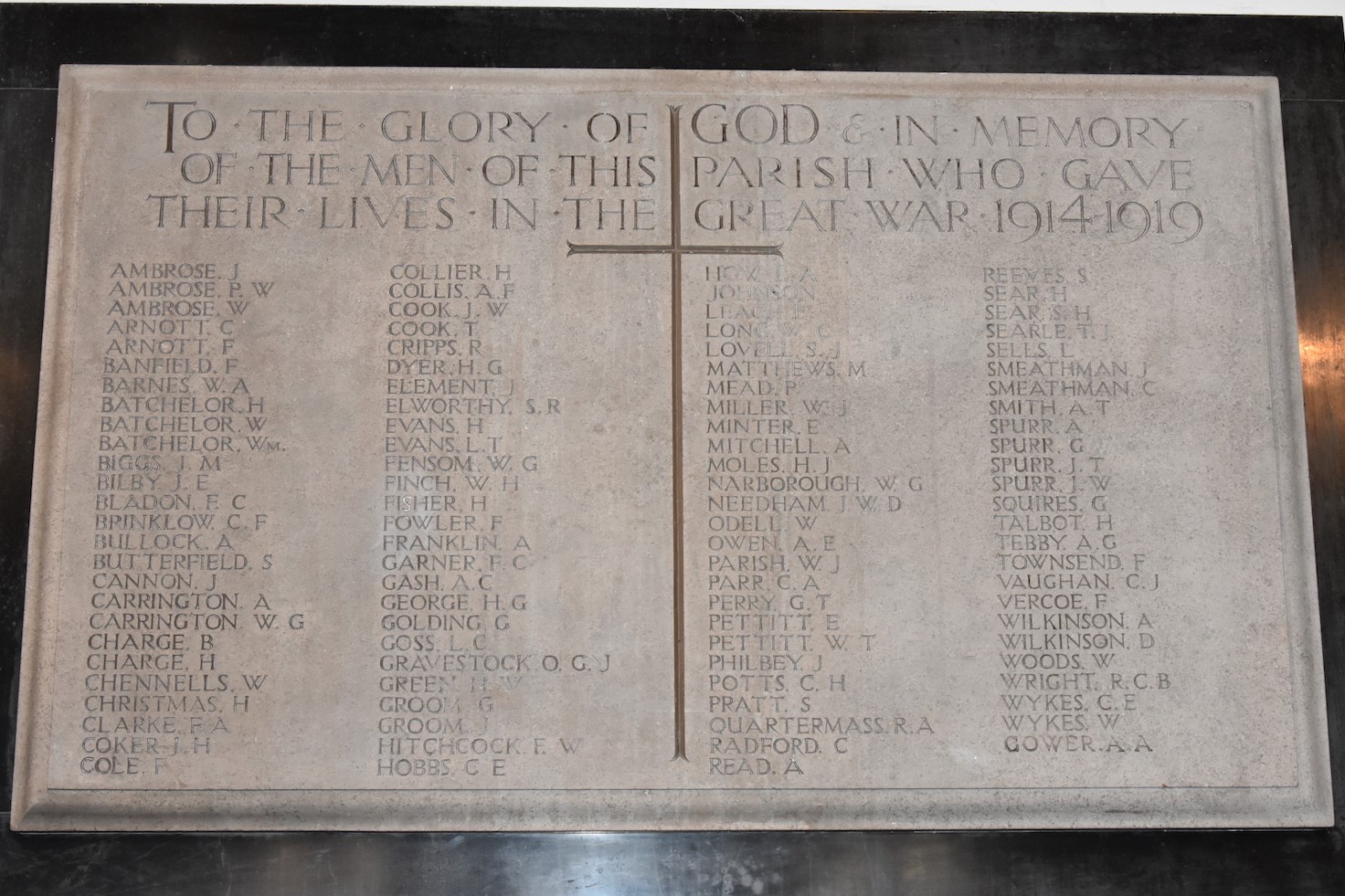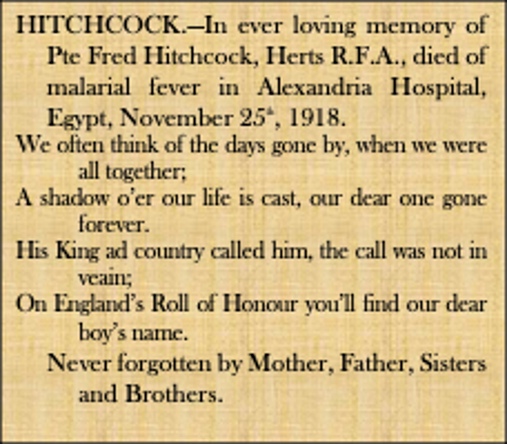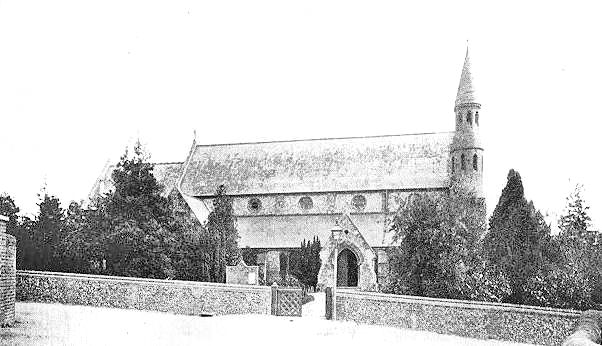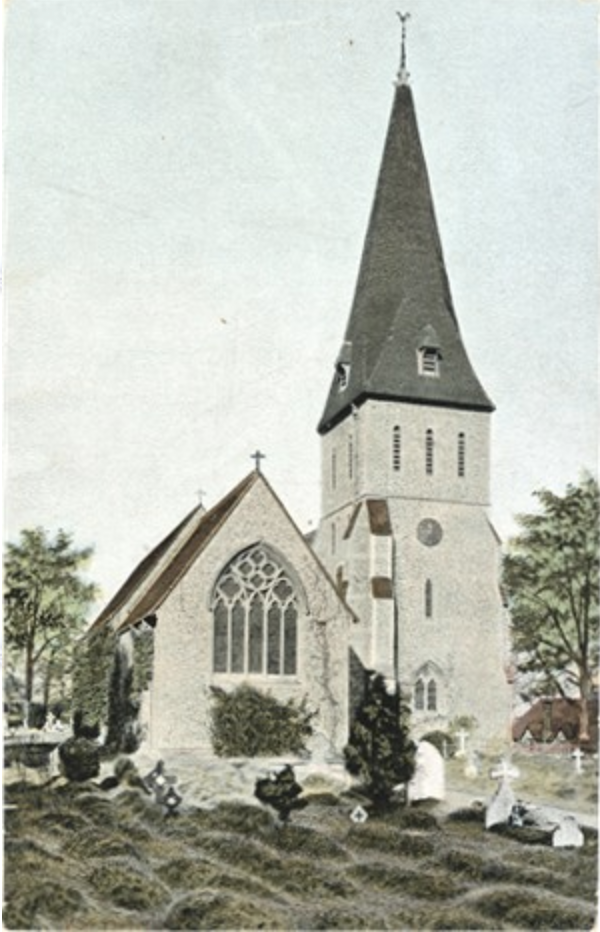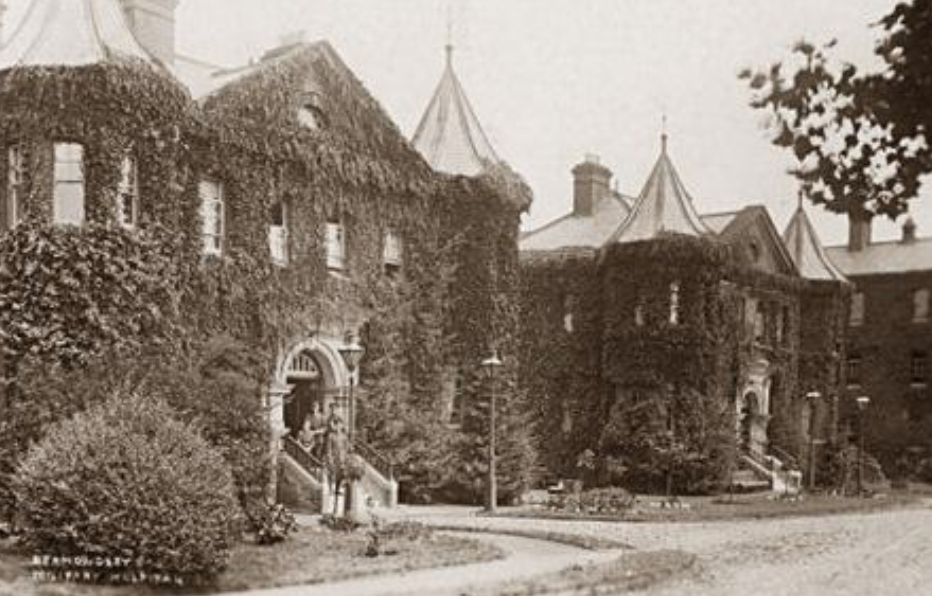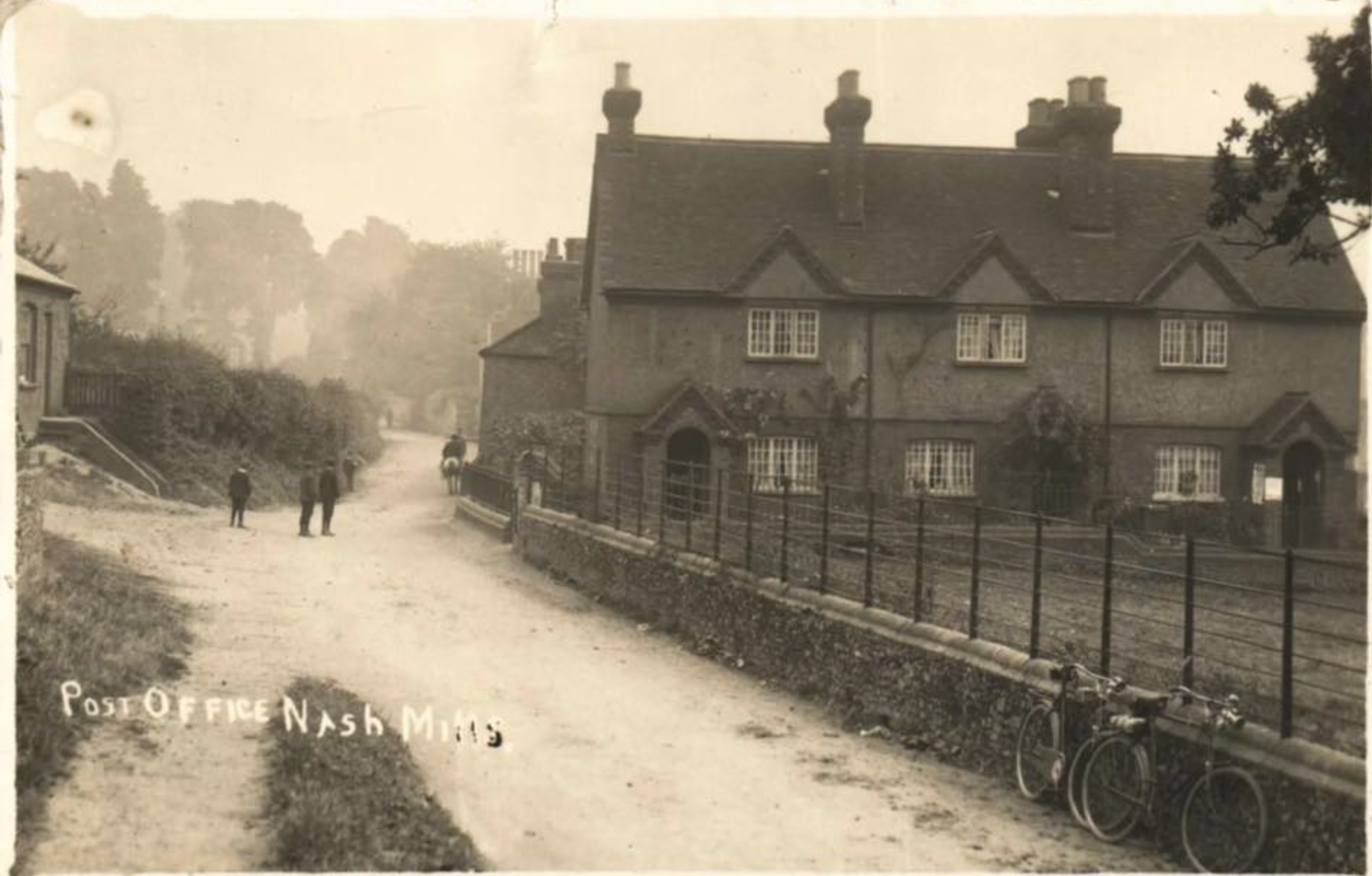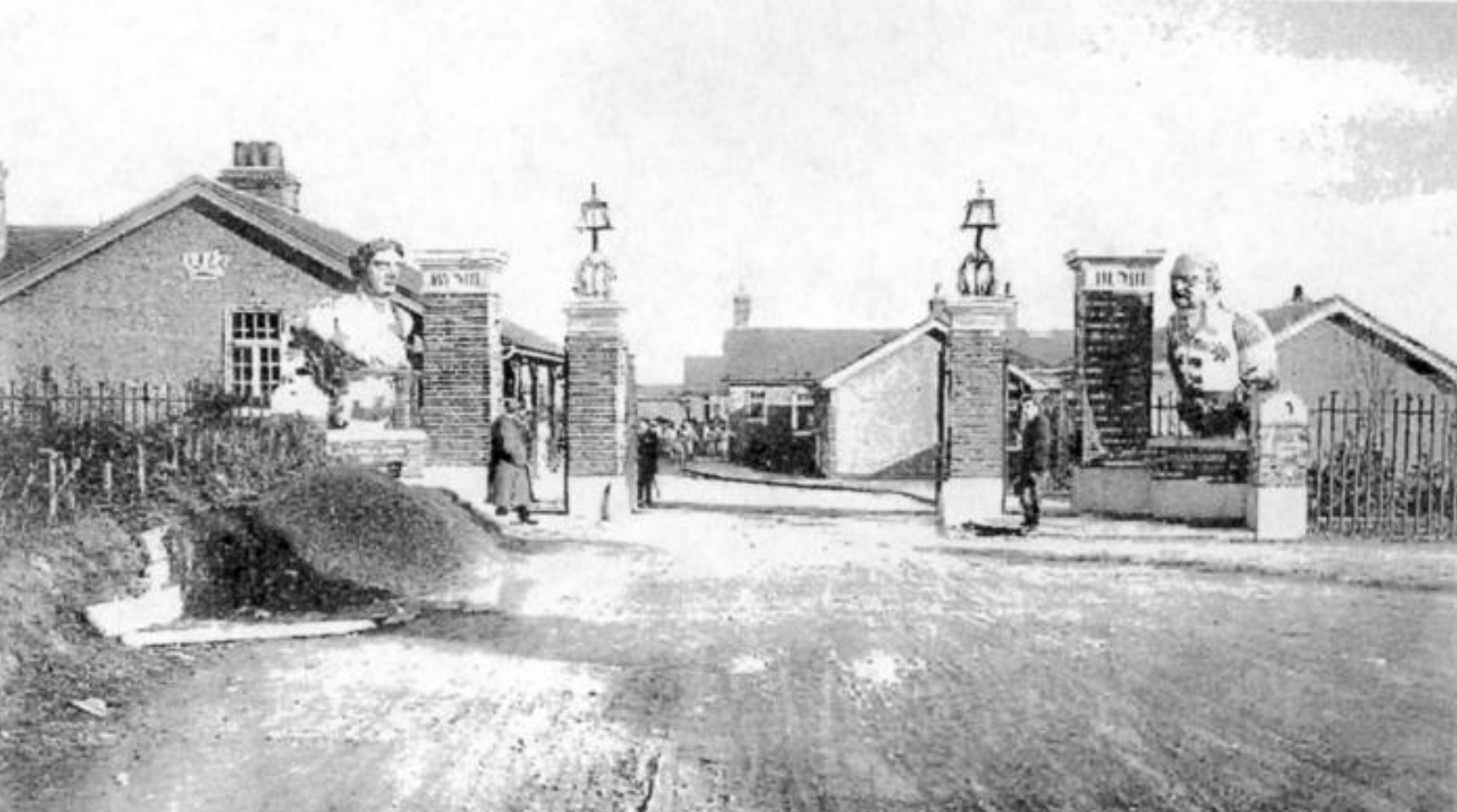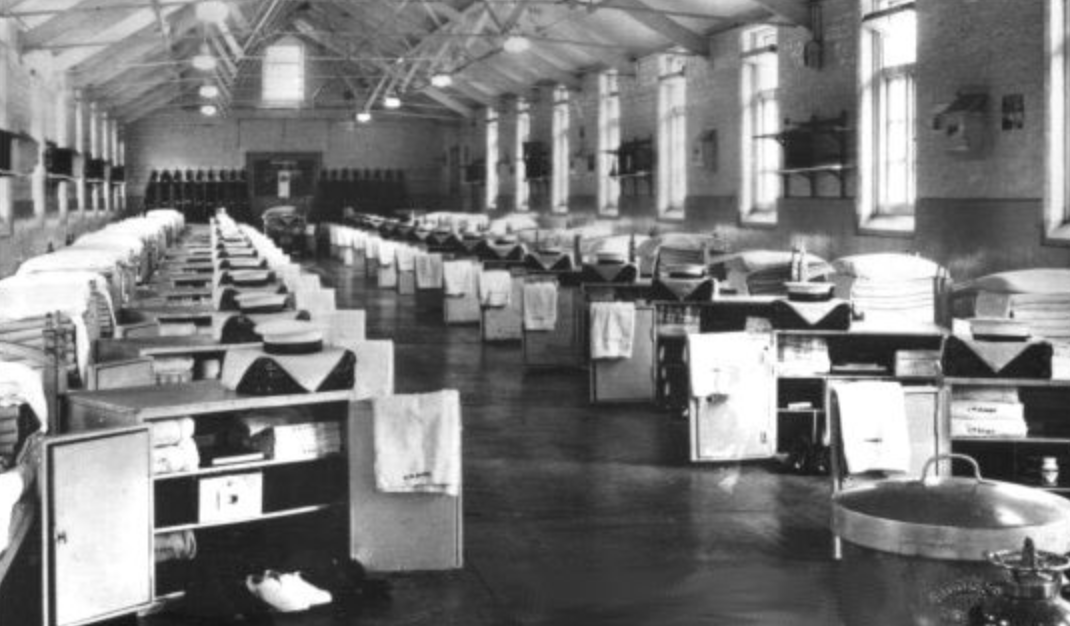Fallen in November 1918:
Ernest Harry Burke
Alan Marlowe Bullock
Ernest Humphreys
Alfred George Tebby
Isaac Sproat
Frank Ward
George Groom
Frederick William Hitchcock
William Hutton
Robert William Rhodes
ERNEST HENRY HASWELL BURKE
13431 Private
Inns of Court Officer Training Corps
Died of Wounds, Saturday, 2nd November 1918
Remembered with Honour, Hemel Hempstead (Heath Lane) Cemetery, Hertfordshire, United Kingdom, Grave XB. 43.
Ernest Henry Haswell Burke was born in late 1899 in Clerkenwell Middlesex, the only son of Rhoda Rebecca Haswell. At the time of Ernest’s birth, his mother worked as a Barmaid in the Baker’s Arms pub on Lea Bridge Road, Leyton in northeast London.
Three years after he was born, his mother married Edmund Burke, a Printer’s Labourer from west London and Ernest adopted his step-father’s name.
When Ernest started his education it was at Westminster City School which was an amalgamation the charters and foundations of several historic charity schools. It was formed by Act of Parliament in 1873 and took its name in 1890 and still drew many of its cohort from poorer boys in the vicinity. The school stands in the same location today, adjacent to Westminster Abbey and close to the Palace of Westminster.
It is not known exactly when Ernest left school or where he went to work, but it seems likely that he was training in the legal profession, possibly as a clerk when war broke out. This is because he chose to enlist with the Inns of Court Officer Training Corps as soon as he was old enough to volunteer.
The Inns of Court Officer Training Corps was based in Berkhamsted, Hertfordshire during the First World War and was originally part of the London Territorial Force and consisted mainly of men connected with the law courts. Ernest attested in Holborn on the 3rd July 1918 and joined the Inns of Court OTC and was sent to Berkhamsted immediately to beginning basic training.
However, only two months after he arrived and approaching the final week of the war, Ernst died as the result of Pneumonia which he developed after contracting Influenza. He was one of the millions of victims who died during the “Spanish Flu” epidemic which swept the world in 1918 and early 1919.
Ernest died in West Herts Hospital in Hemel Hempstead on Saturday, 2nd November 1918 and he was buried five days later in Heath Lane Cemetery on Thursday, 7th November.
He was commemorated on the war memorial plaque at his old school in the City of Westminster.
Ernest is Remembered with Honour in the Hemel Hempstead (Heath Lane) Cemetery, Hertfordshire, United Kingdom, where he is interred in Grave XB. 43. The inscription on his headstone, requested by his mother Rhoda, reads: “UNTIL THE DAY BREAKS”.
He was only 18 years old when he died.
Ernest was entitled to the British War Medal and the Allied Victory Medal.
Westminster City School (Photo: Westminster City School and its origins, R. Carrington, 1983)
An OTC trench party at Berkhamsted (Photo:https://www.greatbritishlife.co.uk)
Rows of beds in a converted quarantine warehouse in 1918. (Photograph: Universal History Archive/Getty Images)
Pte. Burke’s headstone, Heath Lane Cemetery, Hemel Hempstead (Photo:Traquair Photography)
ALAN MARLOWE BULLOCK
2nd Lieutenant
15th Bn., London Regiment (Prince of Wales' Own Civil Service Rifles)
Killed in Action, Monday, 4th November 1918
Remembered with Honour, Valenciennes (St. Roch) Communal Cemetery, Nord, France, Grave III. B. 2.
Alan Marlowe Bullock was born in Hemel Hempstead, Hertfordshire on Monday, 10th January 1898 and baptised in St Mary’s Church just five days later along with his older twin brother Edgar Marlowe. He was the youngest of five sons born to Owen Bullock and Rose Jane Chapman. His older brothers were, Horace Chapman, Owen Leonard, Austin Bernard and Edgar Marlowe. All the Bullock boys served in the Great War and sadly, only Alan was a casualty.
The Bullock family lived at 46 Marlowes where Alan’s father Owen ran his own mechanical engineering business. Owen and Rose were originally form Oxfordshire and they had lived in a number of towns, including London, as Owen had developed his business. As a result, Alan and his twin Edgar were the only two children born in Hemel Hempstead shortly after the family had settled there in 1895.
Alan went to Bury Mill End school which he and Edgar entered in 1903 and when he completed this stage of his education in 1910, he was accepted to King George’s College, Kingsway in London to begin training. This was specifically to be able to join the General Post Office (GPO) which he did in 1913. He was attached to the staff of the GPO Stores department at 21 Bedford Street in London and he worked there until he was given permission by his employer to join the Colours.
Seven months after his eighteenth birthday Alan volunteered for service when he attested at Bedford and joined the 15th Bn., London Regiment (Prince of Wales' Own Civil Service Rifles) as many young civil servants did at the time. At the time of enlistment his medical records state very specifically that Alan was 5 feet 6 and 2/10 inches in height and of slim build.
He was sent to Hazeley Down Camp near Winchester for basic training were in April 1917 he was promoted Lance Corporal. This was not before a bout of influenza which hospitalised him for thirteen days in January of that year. Happily, he recovered fully with only a lingering cough.
Alan applied for a commission and he was accepted in September 1917 and transferred to No. 21 Officer Cadet Battalion at Crookham near Fleet in Hampshire for his training. He was Gazetted back to his original regiment and battalion on the 18th December 1917 and rejoined his unit as 2nd Lieutenant. He was sent to France in April 1918 posted to 1/4th Battalion London Regiment and he arrived with his unit on the 15th of the month. In July he contracted “Trench Fever” and he spent a period of six weeks in hospital until he was recovered and deemed fit for service again.
He returned to his Battalion in mid-August and was appointed Intelligence Officer. His responsibilities in this position would have included the collection and collation of all information, both by personal observation, and by close touch with troops in front line, snipers, scouts, patrols, and observers. He would have had to keep current with the military situation, and intelligence reports promulgated from above as well as studying enemy methods and actions. He would also have been the main point of liaison with the unit Artillery and Machine Guns, and with neighbouring units in the line. He would also have supervised the distribution of war news and intelligence through the Battalion and kept the War Diary.
He was granted a period of home leave on the 12th October and returned to Hemel Hempstead to visit family and friends. When he was home, he told his family that, despite his illnesses, he “enjoyed the life out there” and “would not have missed the chance for anything”. It was probably this attitude which caused his mother to choose the epitaph on his headstone, “The Happy Warrior”.
His brief furlough over, he returned to France to re-join his Battalion not realising he would never return to England.
In early November and just prior to operations against the enemy, Alan was in an advanced position on reconnaissance work when he and his patrol came under enemy fire. Sadly, this proved fatal although his reports were recovered with his body and were put to good effect during a subsequent attack.
Alan was Killed in Action on Monday, 4th November 1918 only one week before the Armistice signing which ended the Great War.
Shortly after his death a brief obituary was published in the Hemel Gazette along with a photograph of the young 2nd Lieutenant describing him a respected officer and a fine athlete. (see extract)
He was commemorated in St Mary’s Church Hemel Hempstead on the War Memorial Plaque.
He is Remembered with Honour in the Valenciennes (St. Roch) Communal Cemetery, Nord, France, where he is interred in Grave III. B. 2. The inscription on his headstone, requested by his mother Rose, reads: “THE HAPPY WARRIOR”, taken from the poem “The Character of the Happy Warrior” first published in 1807 a year after the death of Lord Nelson. The poem has been the source of much metaphor in political and military life and was intended to describe the ideal “man in arms”.
He was only 20 years old when he died.
Alan was entitled to the British War Medal and the Allied Victory Medal.
2nd Lt. Alan Marlowe Bullock (Photo: The Hertfordshire, Hemel Hempstead Gazette and West Herts Advertiser)
Hazeley Down Camp, Winchester where Alan trained (Photo: https://upload.wikimedia.org)
Officers of the 15th Civil Serice Rifles shortly before Alan arrived (Photo: https://armyservicenumbers.blogspot.com)
Extract form The Hertfordshire, Hemel Hempstead Gazette and West Herts Advertiser 2nd Dec. 1918
St Mary’s Hemel Hempstead War Memorial plaque (Photo:Traquair Photography)
Valenciennes (St. Roch) Communal Cemetery (Photo: CWGC)
ERNEST HUMPHREYS
G/23114 Private
2nd Bn., Royal Sussex Regiment
Killed in Action, Monday, 4th November 1918
Remembered with Honour, Vis-En-Artois Memorial, Pas de Calais, France, Panel 6
Ernest Humphreys was born in Hemel Hempstead in late October 1898 and baptised in Watford on Friday, 17th April 1903. He was the youngest of ten children born to Edwin Humphreys and Sarah Dealey. The children were, Edwin, Herbert, Ernest Robert, Edith Florence, Percy (Percival), Horace, Sidney, Arthur Edwin, Robert Edwin and Ernest. Ernest Robert and Edith Florence both died young.
Ernest’s father Edwin was a manual labourer and moved between Hemel Hempstead and Watford to find work. He was variously an ‘Agricultural Labourer’, ‘Bricklayer’ and finally, a ‘House Painter’ and by the time Edwin left school, his parents were back in the Hemel Hempstead area living in Apsley End.
When he left school in 1912, he found employment as a ‘Fitter’s Mate’ although his employer is not known. This was the job he was doing on the outbreak of war and as soon as he was old enough, he went to Watford to volunteer for service.
Ernest enlisted on the 23rd October 1916 and was sent to the Army Reserve on the promise of future service. He was called up and mobilised on the 21st February 1917 and posted to the 24th Training Reserve Battalion at Shoreham-by-Sea in Sussex, where he spent the next year training. On enlistment Ernest was described as “5 feet 7¼ inches tall, 119 lbs in weight and of Fair physical development”.
He was posted on the 16th August 1917 to the Royal Sussex Regiment and joined the 3rd (Reserve) Battalion in Edinburgh to complete his training. He was sent overseas on the 14th December 1917, posted to the 7th Battalion Royal Sussex Regiment.
He saw his first serious action in March 1918 at the Battle of Bapaume, the opening encounter of the Somme Offensive 1918. During the battle Ernest was a casualty when he suffered a bullet wound to his left leg and was immediately taken down the line for treatment. The injury was serious enough that he was evacuated to England and admitted to the 3rd Northern General Hospital at Wharncliffe, Sheffield.
Ernest remained in hospital until the 1st July 1918 and on his discharge was posted to the 3rd Battalion to get fit and await posting. This came on the 7th October when he was sent back to France to the Regiment’s Base Depot, where he remained for only a short period before being awarded some home leave. He immediately returned to Hemel Hempstead to see his family and then set off for the final time to go back to France.
He arrived at the Base Depot a day late and was immediately fined one day’s pay before being posted to his new unit, the 2nd Battalion Royal Sussex on the 27th October 1918, at La Vallee Mulatre to the south-east of Cambrai. He joined as part of a draft of ninety-three men and by the same evening he was back in the trenches where he spent the rest of the month.
At the beginning of November, the 2nd Royal Sussex made ready to attack the enemy across the Sambre-Oise Canal near Catillon, which entailed bridging the canal and capturing the German positions. On the morning of the 4th November the action began but the Battalion soon ran into difficulties owning to insufficient material to bridge the canal. It took a little time to achieve the objective and there were a number of casualties during this effort. However, once the canal was crossed the enemy resistance melted away and the 2nd Royal Sussex overran the German lines.
The Battalion War Diaries record that the casualties whilst crossing the canal totalled “…1 officer killed and 7 wounded. Other Ranks 6 Killed, 86 Wounded and 4 Missing”. Sadly, Ernest was amongst the men killed during the action.
He died on Monday, 14th November 1918. Ernest’s war service had lasted two years, and eleven days and he saw action on only ten of those days, having first had the misfortune to be wounded and then tragically, to be killed just seven days before the signing of the Armistice which ended the conflict.
Ernest is Remembered with Honour on the Vis-En-Artois Memorial, Pas de Calais, France, Panel 6
He was only 20 years old when he died.
Ernest was entitled to the British War Medal and the Allied Victory Medal.
Shoreham-by-Sea training camp WW1 (Photo: https://www.bbc.co.uk)
Bapaume where Ernest first fought and was wounded (Photo: https://en.wikipedia.org)
Wharncliffe War Hospital, Sheffield (Photo: https://www.sheffieldsoldierww1.co.uk)
The Sambre-Oise Canal where Ernest fell (Photo: http://www.stormofsteelwargaming.com)
Vis-En-Artois Memorial, Pas de Calais, France (Photo: CWGC)
ALFRED GEORGE TEBBY
267779 Sapper
70th Bde. Signals, Royal Engineers
Died of Illness, Saturday, 9th November 1918
Remembered with Honour, Tezze British Cemetery, Treviso, Italy, Plot 5. Row B. Grave 11.
Alfred George Tebby was born in Chesham in the summer of 1885 the first child of Joseph Thorpe Tebby and Catherine Roff who had a family of six children together. These were Alfred George, Samuel David, Catherine Amy, William Joseph, Ella Irene and Eva Vera. William died young in 1902 aged three.
Alfred’s father Joseph was a ‘Carpenter and Joiner’ by trade and he opened a shop in Chesham selling furniture some of which he made. He was recorded variously on census returns and in trade directories as a ‘House Furnisher’ and an ‘ Upholsterer’ all the while running his shop at 107 High Street in Chesham.
Whilst at school Alfred twice won 1st and 2nd prizes for vegetable growing and seems to have specialised in peas and broad beans. His winnings amounted to eight shillings, a tidy sum for the eight-year-old. When he left school, he initially joined his father in the business, but he subsequently applied for a position with the Post Office.
In December 1900, when he had reached the qualifying age, he was accepted as a ‘Learner’ at nearby Amersham and two years later, he moved to Southall, west London to take up a position as a 'Junior Clerk'. Outside work, Alfred was a keen footballer and played with a local team Chesham Generals as a centre forward in the Spartan League. The Generals merged with Chesham Town in 1917 to form today's semi-professional Chesham United.
His time with the Post Office lasted only a few years before he left to take up a position managing a branch of his father’s furniture business which had opened at 2 Marlowes in Hemel Hempstead in an area locally known as ‘Cheapside’. This was located approximately where the junctions of Queensway and the Marlowes meet today. By 1911, Alfred and his sister Catherine were living above the shop on 'Cheapside' but by this time, he had met Florence Batchelor.
She was a local girl and lived on Astley Road nearby and had been Alfred’s sweetheart for some time. They were married on Monday, 27th May 1912 in St Mary’s Church on the High Street in Hemel Hempstead. The couple then set up home just across the road from 'Cheapside' on Alma Road where they lived when war broke out.
Alfred continued to work in the furniture shop, but he also offered his services to the Post Office once more and whilst managing the store, he carried out important communications work as a member of local postal staff.
He was eventually called up under the Military Services Act in 1916 however, his father, who was his employer, appealed to the local tribunal for an exemption for his son so that his business could continue to operate. The appeal was successful, and Alfred was granted a four-month exemption in March 1916.
This subsequently extended to ten months before Alfred was summoned a second time to serve at the start of 1917. He father appealed once more and the Hemel Gazette recorded the outcome as follows: “…appeal by employer, J. T. Tebby, High-street, Chesham. Mr. Marnham said the appellant had had ten months exemption and he could not consent to any further time. Appeal refused…”
Alfred travelled to Watford immediately where he attested and enlisted with the Royal Engineers and was posted to the 23rd Divisional Signals Company. By the time he went overseas his unit was in Italy as part of the 70th Brigade under the orders of the 23rd Division.
It is not known exactly when Alfred went out to Italy, but during 1918 the worldwide influenza epidemic, or ‘Spanish Flu’, was wreaking havoc and the armies of the Axis and the Allies were no exception. At some point after his arrival, Alfred contracted the virus which in turn caused him to develop Bronchopneumonia, a bacterial form of the disease often associated with slower acting forms of the flu virus.
His illness proved fatal and Alfred died in hospital in Italy on Saturday, 9th November 1918.
Sadly, the end of the Great War occurred a week before the Armistice was signed on the 11th November 1918, and had it not been for his illness, Alfred may well have survived the conflict.
He is commemorated on the War Memorial Plaque in St Mary’s Church on the High Street in what is now Hemel Hempstead Old Town.
Alfred is Remembered with Honour in the Tezze British Cemetery Treviso, Italy, where he is interred at Plot 5. Row B. in Grave 11. The inscription on his headstone, requested by his wife Florence, reads “IN LOVING MEMORY OF MY DEAR HUSBAND GONE BUT NOT FORGOTTEN THOUGH FAR AWAY”.
He was 33 years old when he died.
Alfred was entitled to the British War Medal and the Allied Victory Medal.
Alfred and Florence Tebby (courtesy: Samantha Pearson)
"Cheapside" Hemel Hempstead where Alfred managed his shop (Photo: Public Domain)
St. Mary's Church, High Street, Hemel Hempstead where Alfred and Florence married (Photo: http://www.hertfordshire-genealogy.co.uk)
Alma Road (branching off to the right) where Alfred and Florence set up home together (Photo: https://www.britainfromabove.org.uk)
Tribunal Certificate of Exemption from military service (Photo: https://www.ourwarwickshire.org.uk)
St. Mary’s, Hemel Hempstead War Memorial plaque (Photo: Traquair Photography)
Tezze British Cemetery, Treviso, Italy (Photo: CWGC)
ISAAC SPROAT
WR/266488 Lance Corporal
18th Wagon Erecting Coy., Royal Engineers
Died of Illness, Saturday, 16th November 1918
Remembered with Honour, Les Baraques Military Cemetery, Sangatte, Pas de Calais, France, Grave VI. G. 13A.
Isaac Sproat was born on Wednesday, 22nd June 1887 in Brayton railway station, near Aspatria, Wigton, Cumberland (Cumbria) just to the north of the Lake District. He was the second and youngest child born to Thomas Sproat and Elizabeth Patterson and his older sibling was Joseph George.
His father Thomas was the Station Master at Brayton on the Maryport and Carlisle Railway who tragically died as the result of a shunting accident on the 12th September 1911. The investigation and report into his death by the Railway Inspectorate reported the following: “At 8.15 am he had released the brakes on four wagons standing on a loading bank to move them by gravity. He was caught between one of the wagons and the bank and died of his injuries”. Thomas was sixty-one years old. His wife Elizabeth had Thomas buried in the Churchyard of Middlebie church near her birthplace in Kirkpatrick, Dumfriesshire and she joined him there in 1932 when she died aged eighty-six.
Isaac went to school in 1893 and attended the Board School in Aspatria before entering the newly created Nelson School for Boys in January 1899. Nelson School was a grammar school originally founded in 1714 as Wigton Grammar School and stands in the same location in the town today as The Nelson Tomlinson School. One famous alumnus was Melvyn Bragg the writer and broadcaster.
When Isaac completed his education in 1903, he like his father and brother joined the railways. He started work on the 14th April 1903 in the Audit Department of the Coaching Division of the London and North Western Railway (LNWR), an ancestor of today’s West Coast Mainline. He was a Junior Clerk and stayed at Armathwaite for four years before moving briefly to the LNWR headquarters at Euston station in London. Six months later he moved back to the Coaching Division this time in Watford and by 1911 both he and his brother George were boarding together at the home of Frederick Boxall at 62 Market Street in Watford and both recorded as Clerks.
Around this time, Isaac met his future wife Agnes Mary Sygrove who was born in 1887 in nearby Bushey. Agnes worked as a Shop Assistant in a Hairdressers and the couple married on Saturday, 6th June 1914 at Bushey & Oxhey Methodist Church just two months before the outbreak of war.
By the time of his marriage Isaac was living in Boxmoor, Hertfordshire close to the railway station where he was working. Agnes joined him and they moved into a house at 11 Sebright Road where they were together for only a few months before Isaac volunteered.
Isaac attested at the start of 1915 and enlisted with the Army Service Corps (ASC) where his experience on the railways could be put to best use. The ASC were the unsung heroes of the British Army in the Great War. Soldiers could not fight without food, equipment and ammunition nor could they move without horses or vehicles. It was the job of the ASC to provide these and the vast majority of supply to maintain the armies on many fronts, came from Britain. The ASC used horses and motor vehicles, railways and waterways, and performed prodigious feats of logistics which was one of the great strengths of organisation which ensured the war was won.
He was posted to one of the two Railway Labour Companies to train and in December 1915 he went overseas disembarking in France on the 21st of the month. He was then sent to one of the detachments of ‘Special Supply’ of which there were five in France at bases in Le Havre, Bailleul, Steenwerck, Caestre and Strazeele.
At some point during the conflict, Isaac transferred to a specialist Railway Operating Division and was posted to the 18th Wagon Erecting Company where his duties involved constructing, repairing and maintaining the train rolling stock. He spent the whole of the war involved in this vital work and seemed sure to return to England as the war drew to a conclusion.
However, throughout 1918 the worldwide influenza epidemic or ‘Spanish Flu’ was wreaking havoc and the armies of both the Axis and the Allies were no exception. It appears that having survived to see the war end in victory for the Allies with the signing of the Armistice, Isaac was preparing to return home when he was struck down with ‘Spanish Flu’. This resulted in complications and he contracted Bronchopneumonia, a bacterial form of the disease often associated with slower acting forms of the flu virus.
He was admitted to 35 General Hospital, one of five serving Calais in France, where sadly he succumbed to his illness just five days after the end of the Great War.
Isaac died on Saturday, 16th November 1918.
Throughout his time in France, Isaac sent back beautiful embroidered cards to Agnes as tokens of his love. Agnes and Isaac had no children together and many years later she passed the cards that he had sent to one of her great nieces. Agnes did not remarry after Isaac’s death and she passed away in Hove, East Sussex in 1977 at the age of ninety.
He was commemorated on a number of memorials in Watford, Boxmoor and the Audit Office Euston Station London war memorial the last of which is now held at the National Memorial Arboretum in Staffordshire.
In Watford he was listed on the Borough Memorial and on the War Memorial plaque in Bushey & Oxhey Methodist Church. In Boxmoor, Hemel Hempstead he is listed on the plaque in St John the Evangelist parish church not far from Sebright Road where he and Agnes had lived.
Isaac is Remembered with Honour in the Les Baraques Military Cemetery, Sangatte, Pas de Calais, France, Grave VI. G. 13A. The inscription on his headstone, requested by his wife Agnes, reads “UNTIL THE DAY BREAK”.
He was 31 years old when he died.
Isaac was entitled to the 1914-15 Star, the British War Medal and the Allied Victory Medal.
Brayton Railway Station where Isaac was born (Photo: http://www.cumbria-railways.co.uk)
Nelson School, Wigton where Isaac completed his education (Photo: https://www.arthurowen-evans.com)
The Great Hall in Euston Station would have been familiar to Isaac (Photo: https://thebeautyoftransport.com)
Sebright Road, Boxmoor where Isaac and Agnes lived (Photo: Public Domain)
Wagon erecting tracks (Photo: https://www.greatwarforum.org)
Audit Office Euston (LNWR) War Memorial Plaque (Photo: https://www.militaryimages.net)
Lce. Cpl. Sproat’s Headstone (Photo: Len:www.findagrave.com)
FRANK SAMUEL WARD
291130 Private
‘D’ Coy., 11th Bn., Norfolk Regiment
Died of Illness, Tuesday, 19th November 1918
Remembered with Honour, Kingswood (St. Andrew) Churchyard, Surrey, England, East of Church
Frank Samuel Ward was born in Northington, near Winchester, Hampshire in February 1875 and baptised two months later on Sunday, 4th April. He was the second of seven children born to John William Ward and Eleanor White and his siblings were, John Ernest, Leonard William, Eleanor, Daisy, Harry Bertram and Evelyn Violet. Two of his sisters died young Eleanor and Daisy.
Frank’s parents were both school teachers and not long after he was born, the family moved to Banstead in Surrey and it was here that Frank and siblings were educated and grew up. When he left school in 1888, he went to work in a shop and by 1891 he was employed as a ‘Shopman’ by one Jubal Webb.
Jubal Webb was a Cheesemonger and traded from premises on Kensington High Street in London next to Barkers department store. Webb, who was a shameless self-promoter, was most famous for being the owner of the "Mammoth Cheese". This cheese, at six feet high and twenty-eight feet wide, was the largest cheese in the world. Made in Canada, it was exhibited at the Chicago World's Fair in 1893 and Webb purchased the cheese and brought it to London, where it was carved up in a ceremony presided over by the Canadian High Commissioner, Sir Charles Tupper.
It was here that Frank learned his trade and although it is not known how long he worked for Jubal Webb, if he was still working for him in 1900, his employment would have ended when Webb’s business went into administration.
By 1905 Frank was in Hemel Hempstead where he worked and lived at 73 High Street, the Drapery store owned by William Clarke. Frank worked as a Draper’s Clerk and Cashier in Clarke’s business and was an active member of two local churches where he became the regular organist. Firstly, St John the Baptist, Great Gaddesden and secondly, St Paul’s Church on Queen Street where he also worshipped.
Frank was one of the original members of the Hemel Hempstead Volunteers Company. He remained in the employ of William Clarke until he volunteered in 1915 when he was almost forty years old. He attested under the Group (Derby) Scheme at Watford on the 19th December when on the promise of future service, he was categorised “Class A” assigned to Group 23 and posted to the Army Reserve with a day’s pay.
His Group number meant that he was mobilised in March 1916 when he returned to Watford to enlist, however, rather than being sent for basic training he was once again posted to the Army Reserve. It is not clear from his surviving service records why this happened, but it is possible he was categorised “Unfit for Military Service”. This is because when he did finally enlist on the 21st May 1917, his records note he had been recategorized “A” and therefore fit to join the Army.
He was posted to the 11th Battalion Norfolk Regiment and began training but only five months later in October, his Battalion received orders to disband and he was transferred to the Labour Corps and posted to 667 Agricultural Company.
This posting again suggests that Frank had issues with his fitness as the Agricultural Companies tended to be made up from enlisted men who were considered unfit for frontline combat duties. He served his time at home in England where he worked the land as there were major labour shortages due to the war and food production was vital for both the home front and the armies overseas.
The global influenza pandemic, known as “Spanish Flu ”, began in January 1918, but in the UK and many other parts of the world, reached its peak between September and the end of November of that year because of a second wave and stronger strain of the virus. By August, when the second wave began in France, Sierra Leone, and the United States, the virus had mutated to a much more deadly form and October 1918 was the month with the highest fatality rate of the whole pandemic.
This increased severity has been attributed to the circumstances of the First World War, primarily because severely ill soldiers were sent on crowded trains to crowded field hospitals, spreading the deadlier virus. In the UK alone, a quarter of the population were affected, some 10,500,000 million people, of which 228,000 died of the illness or its effects. This compares to 744,000 British combat deaths in the entire war.
Frank fell ill on the 3rd November 1918 and three days later was admitted to Whipps Cross Hospital, Leytonstone in London and diagnosed with influenza. He was immediately treated and three days later showed signs of slight improvement. However, he had in fact contracted Bronchopneumonia and he quickly deteriorated and died.
He succumbed to the illness at 1.10 pm on Tuesday, 19th November 1918, thirteen days after being admitted to hospital and tragically eight days after the Armistice was signed ending the Great War.
Frank’s body was returned to his parents at Tadworth in Surrey and he was buried at St Andrew’s Church in Kingswood on Tuesday, 26th November 1918.
He was commemorated on the original war memorial plaque in St Paul’s Church on Queen Street in Hemel Hempstead where he had been the organist before the war. The plaque was sadly lost when the church was demolished in the early 1980’s but has been replaced with a decorative scroll which is on display in the present church in Highfield, Hemel Hempstead.
Frank is Remembered with Honour in the Kingswood (St. Andrew) Churchyard, Surrey, England, where he is interred in a Grave to the East of the Church.
He was 43 years old when he died.
(Frank’s records are a little confusing in regard to his age when he died, with some of the military records stating 41 and but most others 43. I have used his birth and census records to settle his age)
Frank was entitled to the British War Medal and the Allied Victory Medal.
Kensington High Street, Church Street and Jubal Webb's shop halfway along, where Frank worked (Photo: Public Domain)
The "Mamouth Cheese" purchased by Jubal Webb (Photo: http://www.urbanmarket.com)
St. John's,Great Gaddesden where Frank was the organist (Photo: http://www.hertfordshire-genealogy.co.uk)
St. Paul's, Queen Street where Frank played the organ and worshipped (Photo: http://www.hertfordshire-genealogy.co.uk)
Whipps Cross Hospital where Frank died (Photo: https://www.guardian-series.co.uk/)
St. Paul's War Memorial Scroll (Photo: Traquair Photography)
Frank’s grave in St Andrew’s Churchyard (Photo: https://www.surreyinthegreatwar.org.uk)
GEORGE GROOM
3/8709 Private
2nd Bn., Bedfordshire Regiment
Died of Illness, Sunday, 24th November 1918
Remembered with Honour, Hemel Hempstead (Heath Lane) Cemetery, Hertfordshire, United Kingdom
George Groom was born in Great Gaddesden, Hertfordshire in January 1885 and baptised a month later at St John the Baptist Church in the village, on Sunday, 22nd February 1885. He was the 3rd son and child of Thomas Groom and Mary Ann Mortimer who had seven children together. George’s siblings were, James and Frank both older and Frederick, Bertie, Ernest and Emma who were younger.
When George was born his family lived on a road known locally as “The Barracks” in the small rural community of Great Gaddesden. His parents, Thomas and Mary Ann, were working as an “Agricultural Labourer” and a “Straw Plaiter” respectively, and the 1891 census recorded that almost everyone of working age in their close vicinity was engaged in the same occupations.
George initially attended the local school, which was only a step or two away from his front door but may not have completed his education there as his family moved to Hemel Hempstead, sometime in the 1890s. By the time of the next census in 1901, George was living at 29 Cherry Bounce at the northern end of the High Street and he was working as an “Iron Foundry Hand”. He worked at the “Boxmoor Iron Works”, owned by Davis & Bailey on the Marlowes, where Bank Court is situated today.
In 1905, just after his twentieth birthday, George joined the Militia when he enlisted with the 4th Bedfordshire Regiment on the 17th February. By this time, he was working as a “Farm Labourer” and he was a tall man at “5 feet 9 inches” and well-nourished weighing nine and a half stones. He was described as having a fresh complexion, hazel eyes and brown hair and was declared “Fit for service Militia”.
Over the next four years he attended the annual Summer Camps and in June 1908 he signed on for a further two years. His service in the 4th Bedfordshires expired on the 26th February 1911 and George was transferred to the Army Reserve. By this time, he was back living in Great Gaddesden with his Uncle and Aunt, Thomas and Sarah Spurr and working nearby as a “Farm Labourer”.
On the outbreak of war, as a member of the Army Reserve, George was called up almost immediately and he attested at Watford on the 20th October 1914 and re-enlisted with the Bedfordshire Regiment. He was immediately posted to the 9th Battalion at Felixstowe in Suffolk to refresh his knowledge, before being sent to France on the 27th December posted to the 2nd Battalion.
He spent time in the trenches in January 1915, but his time at the Front was brief and, on the 10th January 1915, he was posted back to Depot and returned to England. The reason for his return was illness as revealed in his Army Medical Board report later in the year. It describes how in January 1915, George began to suffer heart problems not long after joining his unit, initially falling out of line after six miles of a route march, and later experiencing “chest pains and palpitations” whilst carrying out his duties.
Following his return, he was posted to the 3rd Battalion at Landguard Fort in Felixstowe on coastal defence duties. However, his health deteriorated and by late May he was examined by the Medical Unit to determine his fitness to serve. The result was that George was categorised “…no longer physically fit for war service” and his condition was deemed to have been aggravated by active service. He was honourably discharged due to “Disordered action of heart” on the 8th June 1915 with an Army pension and a Silver War Badge, and he returned to Hemel Hempstead.
The Silver War Badge was introduced as an award of "King's Silver" for having received wounds or injury during loyal war service to the Crown's authority. A secondary reason for its introduction was due to a practice which had developed in the early years of the war, where some women took it upon themselves to confront and publicly embarrass men of fighting age, they saw in public places who were not in military uniform. They would ostentatiously present these men with white feathers, as a suggestion of cowardice. As the war developed, substantial numbers of servicemen who had been discharged from service with wounds that rendered them unfit, but which were not obvious from outward appearances, found themselves being harassed in such a manner. The badge, to be worn on the right breast while in civilian dress, was a means of discouraging such incidents. It was forbidden to wear the badge on a military uniform.
Little is known about George’s life after he returned home until in November 1918 when he succumbed to his illness and died of heart failure.
He passed away in West Herts Hospital on Sunday, 24th November 1918.
George was commemorated on the War Memorial plaque in St Mary’s Church on the High Street where he worshipped.
George is Remembered with Honour in Hemel Hempstead (Heath Lane) Cemetery, Hertfordshire, United Kingdom.
He was 33 years old when he died.
George is entitled to the 1914-15 Star, the British War Medal and the Allied Victory Medal.
Great Gaddesden where George was born (Photo: http://www.hertfordshire-genealogy.co.uk)
Cherry Bounce where the Groom family lived for many years (Photo: Time’s Highway, Elizabeth Buteux, Dacorum Heritage Trust, 1998)
Workers at the gates of Boxmoor Ironworks (Photo: https://www.ourdacorum.org.uk)
Landguard Fort, Felixstowe where George's war ended. (Photo: https://rushdenmuseum.co.uk)
The Silver War Badge (Photo: Public Domain)
St. Mary’s War Memorial plaque (Photo:Traquair Photography)
Heath Lane Cemetery, Hemel Hempstead (Photo: Ian Wood 2015)
FREDERICK WILLIAM HITCHCOCK
890272 Driver
"A" Bty. 270th Bde., Royal Field Artillery
Died of Illness, Monday, 25th November 1918
Remembered with Honour, Alexandria (Hadra) War Memorial Cemetery, Egypt, Grave E. 225.
Frederick William Hitchcock, known as Fred, was born in Hemel Hempstead, Hertfordshire on Friday, 21st June 1895 and baptised on Friday, 12th July of the same year in St Mary’s Church in the town. He was the second son and fifth child of Charles John Hitchcock and Annie Lane who had a large family of ten children who were, Lily, Charles John, Ann, Rose, Fred William, Stanley, Sidney Thomas, Winifred Daisy, Herbert Reginald and Nellie.
Stanley died when he was just a year old in 1899 whilst Fred’s brother Charles also died in the Great War aged twenty-nine, when he went down with the torpedoed RSS Leinster on the 10th October 1918. Charles’ biography is also on this site.
When Fred was born his family lived on Bury Hill in Hemel Hempstead and his father Charles worked as a ‘Bricklayer’s Labourer’. Over the years his father found work as a ‘Gravedigger’ and a ‘Farm Labourer, whilst almost all of his children, including Fred went to work at John Dickinson & Co. Limited in Apsley Mills.
On the outbreak of war Fred remained at Apsley Mills where he worked as a “Printer” which as a skilled job was one of many which were “starred” or reserved. This meant that he needed his employer’s permission to volunteer and it would not be until June 1915, that Fred was able join the Colours.
In June 1915, he attested at Hemel Hempstead and enlisted with the Royal Horse and Field Artillery and was immediately posted for basic training. He was assigned to be a Driver and on completion of his training he was sent overseas to the Middle East and the Egyptian Expeditionary Force where he was posted to the 54th (1st East Anglian) Division Royal Field Artillery.
Fred embarked for France on the 18th November and landed the following day where his brigade joined the 33rd Division whose artillery was still in training. He remained on the Western front for a month before learning that his unit was to re-join its original division in Egypt.
He embarked from Marseille on the 30th January bound for North Africa arriving in Alexandria on the 14th February before moving first to Mena Camp near Cairo and then in April into No 1 (Southern) Section of the Suez Canal defences. At the end of 1916 his Brigade was renamed the 270th Brigade and re-organised into six-gun batteries and Fred was posted to “A” Battery (1/1st Hertfordshire).
In 1917, Fred was involved in all three Battles of Gaza and at the end of the year, the Battle of Jaffa. He was at Berukin in April 1918 and was five months later, part of Allenby’s final offensive at Megiddo in September at the Battle of Sharon. Having survived all these engagements and seeing the end of hostilities on the 31st October 1918, Fred went back to Egypt to await demobilisation and his return to England.
Sadly however, in mid-November he was struck down by malaria and immediately admitted to hospital in Alexandria. His treatment either came too late to be of any use or availability of quinine, the only effective remedy at the time, was limited due to a malarial epidemic during the preceding month.
Fred quickly deteriorated and tragically died of his illness on Monday, 25th November 1918.
His family received notification of Fred’s death less than two months after his older brother Charles had been killed, a bitter blow given that the war had finally ended.
He was commemorated on the John Dickinson & Co. Limited War Memorial at Apsley End where he had worked and the War Memorial plaque in St Mary’s Church in Hemel Hempstead where he had been baptised.
An “In Memoriam” notice appeared in the Hemel Gazette a year after Fred’s death. (see extract)
Fred is Remembered with Honour in the Alexandria (Hadra) War Memorial Cemetery, Egypt, where he is interred in Grave E. 225. The inscription on his headstone, requested by his mother Annie, reads simply: “R.I.P.”
He was 23 years old when he died.
Fred was entitled to the 1914-15 Star, the British War Medal and the Allied Victory Medal.
St. Mary's Church Hemel Hempstead where Fred was baptised (Photo: http://www.hertfordshire-genealogy.co.uk)
Mena (Pyramids) Camp where Fred was posted on his return to Egypt in 1916 (Photo: https://digital.collections.slsa.sa.gov.au)
Megiddo where Fred fought in the Battle of Sharon (Photo: https://www.awmlondon.gov.au)
St. Mary’s Hemel Hempstead War Memorial plaque (Photo: Traquair Photography)
Extract from The Hertfordshire, Hemel Hempstead Gazette and West Herts Advertiser 9th Nov. 1919
Alexandria (Hadra) War Memorial Cemetery, Egypt (Photo: CWGC)
WILLIAM HUTTON
27019 Private
Somerset Light Infantry
Died of Wounds, Monday, 25th November 1918
Remembered with Honour, Apsley End (St. Mary) Churchyard, Apsley, England, Between the Church and Road
William Hutton was born in Hemel Hempstead, Hertfordshire in late 1887 and baptised on 22nd June 1888 in St Paul’s Church on Queen Street along with his sisters Rose and Beatrice. William was the second son and fourth child born to George Hutton and Elizabeth Smith whose other children were, Arthur George, Rose Jane, Beatrice Elizabeth, Elizabeth and Herbert. William’s two older sisters Rose and Beatrice both died in 1893 aged nine and eight respectively, possible from measles a common cause of death in children in late Victorian England. His father George died in 1899 when William was only twelve-years-old.
William went to Queen Street School close to where he lived and a note in the school log in 1895 reveals that he was considered a “Delicate” child and was exempt from “the Standard I” test that year. This was not an unusual occurrence at that time and six of William’s school mates are also listed with the same condition.
He completed his education in 1900 and immediately went to work for John Dickinson & Co. Limited in Apsley Mills where his father had been employed for many years and where William worked as a “Paper Stamper”.
Whilst working in Apsley Mills William met Amy Stone who worked in the Card Department and the two became sweethearts. They married in in St Mary’s Church, Apsley End in early 1912 and soon started a family, with the arrival of their first child Frederick George later the same year followed in 1916 by a daughter, Doris Beatrice.
William volunteered under the Group (Derby) Scheme when he attested at Hemel Hempstead in October 1915. On the promise of future service, he was posted to the Army Reserve and returned to his job at Dickinsons. In May 1916 he received his call up and he returned to enlist with the Hertfordshire Regiment and was sent for basic training. He was sent to France in early 1917 not long after his daughter Doris was born, and he was posted to the 1/1st Battalion Hertfordshire Regiment. The 1/1st was under the orders of the 39th Division and throughout 1917 fought in Flanders ending the year engaged in the horror that was Passchendaele.
Unfortunately, William’s records do not reveal how long he served with the 1/1st Herts or where he fought but they do record that he received a gunshot wound to the head at some point. It was as a result of this wound that he was transferred to the Somerset Light Infantry later in the War. It was not uncommon for wounded men, particularly in the later years of the conflict, to be posted back to a different regiment when they recovered from the one that they initially joined. This was based on a policy of reinforcing units which had suffered heavy losses and required rebuilding.
Following the Armistice signing on the 11th November 1918, it appears William was back in England and living in Tooting in southwest London with his wife and children. This suggests he was either on home leave, was ill suffering from his wounds or had possibly been demobilised. Whatever the reason William was clearly unwell and in late November he contracted Meningitis and died suddenly in Hospital at Bermondsey. The meningitis was cited as the cause of death but directly as a result of the gunshot injuries he had received, and he was deemed to have “Died of Wounds”.
William died on Monday, 25th November 1918.
He was commemorated on the John Dickinson & Co. Limited War Memorial at Apsley End where he had worked until going to war.
He was also commemorated on the War Memorial Plaque in St Mary’s Church, Apsley End where he had married and worshipped.
His remains were returned to Apsley for burial and William is Remembered with Honour in the Apsley End (St. Mary) Churchyard, Apsley, England, where he is interred in a Grave between the Church and road. The inscription on his headstone, requested by his wife Amy, reads; “SINCERE AND TRUE IN HEART AND MIND A BEAUTIFUL MEMORY LEFT BEHIND”.
He was 31 years old when he died.
William was entitled to the British War Medal and the Allied Victory Medal.
St. Paul's Church, Queen Street where William and two of his sisters were baptised (Photo: http://www.hertfordshire-genealogy.co.uk)
St. Mary's church, Apsley End where William and Amy married in 1912 (Photo: http://www.hertfordshire-genealogy.co.uk)
Bermondsey Hospital where William died (Photo: http://www.25throyalfusiliers.co.uk)
John Dickinson & Co. War Memorial, Apsley End (Photo: Traquair Photography)
Pte. William Hutton’s headstone (Photo: Traquair Photography)
ROBERT WILLIAM RHODES
J/93453 Boy 2nd Class
H.M.S. Ganges, Royal Navy
Died of Illness, Thursday, 28th November 1918
Remembered with Honour, Apsley End (St. Mary) Churchyard, Apsley, England, South of Chancel
Robert William Rhodes was born in Hemel Hempstead, Hertfordshire on Sunday, 22nd June 1902 the first child of Robert William Rhodes and Alice Stevens. He had an older half-brother Edward James and two younger siblings, Thomas Edwin and Eleanor Fanny. There was another child who died in infancy, whose name is unknown.
Robert’s parents both worked at John Dickinson & Co. Limited until Robert was born when his mother left the paper mills to raise, her children. The Rhodes family lived in Nash Mills where the children grew up and had their schooling, although Edward and Robert very briefly went to Two Waters British School in 1909 before returning to Nash Mills after a month.
When he finally, left school in 1915 Robert went to work as a “Mill Sawyer”, but did not stay long in this job leaving in October 1918 to join the Royal Navy. He signed on as a “Boy 2nd Class”, a rating for a boy aged fifteen to seventeen who would be sent to a training ship of the Royal Navy. Such entry was conditional on a boy's adequate physical height, weight and medical fitness and evidence of being of 'good character'. The boy's parents or guardians had to sign a declaration that the boy would serve in the navy for a minimum period usually twelve years.
Roberts naval records confirm this fact when he signed on in October 1918 with the promise of twelve years service starting in June 1920 by which time he would have completed his initial training and reached the age of eighteen.
He was sent to HMS Ganges and on-shore training establishment at Shotley near Ipswich to begin his naval induction. Sadly however, Robert had been there for only a few weeks when he like so many others contracted “Spanish Flu”, the deadly influenza pandemic raging across the globe.
He was immediately admitted to the Naval Sick Quarters at Shotley but within days he had developed complications and was diagnosed with Bronchopneumonia. He was unable to fight the disease and tragically died after only a few more days.
Robert succumbed to his illness on Thursday, 28th November 1918.
His body was returned to Apsley for his funeral shortly afterwards and he was commemorated on the War Memorial plaque in St Mary’s Church, Apsley End.
Robert is Remembered with Honour in the Apsley End (St. Mary) Churchyard, Apsley, England, where he is interred in a Grave South of the Chancel.
He was only 16 years old when he died and is the youngest man commemorated on the Hemel Hempstead town War Memorial, five days younger than Boy 1st Class Thomas Cripps whose biography also appears on this site.
The hamlet of Nash Mills where Robert grew up (Photo: Public Domain)
The "Hallowed Gates" of HMS Ganges at Shotley (Photo: https://www.commsmuseum.co.uk)
The Sick Quarters at HMS Ganges where Robert died (Photo: https://irishroversbooks.files.wordpress.com)
Robert’s headstone (Photo: Traquair Photography)
